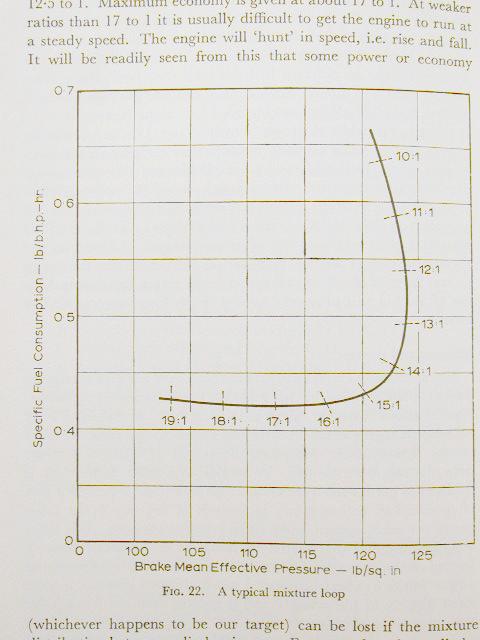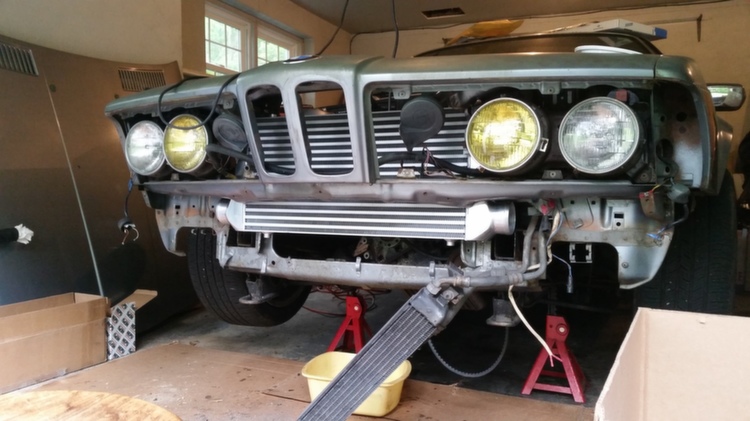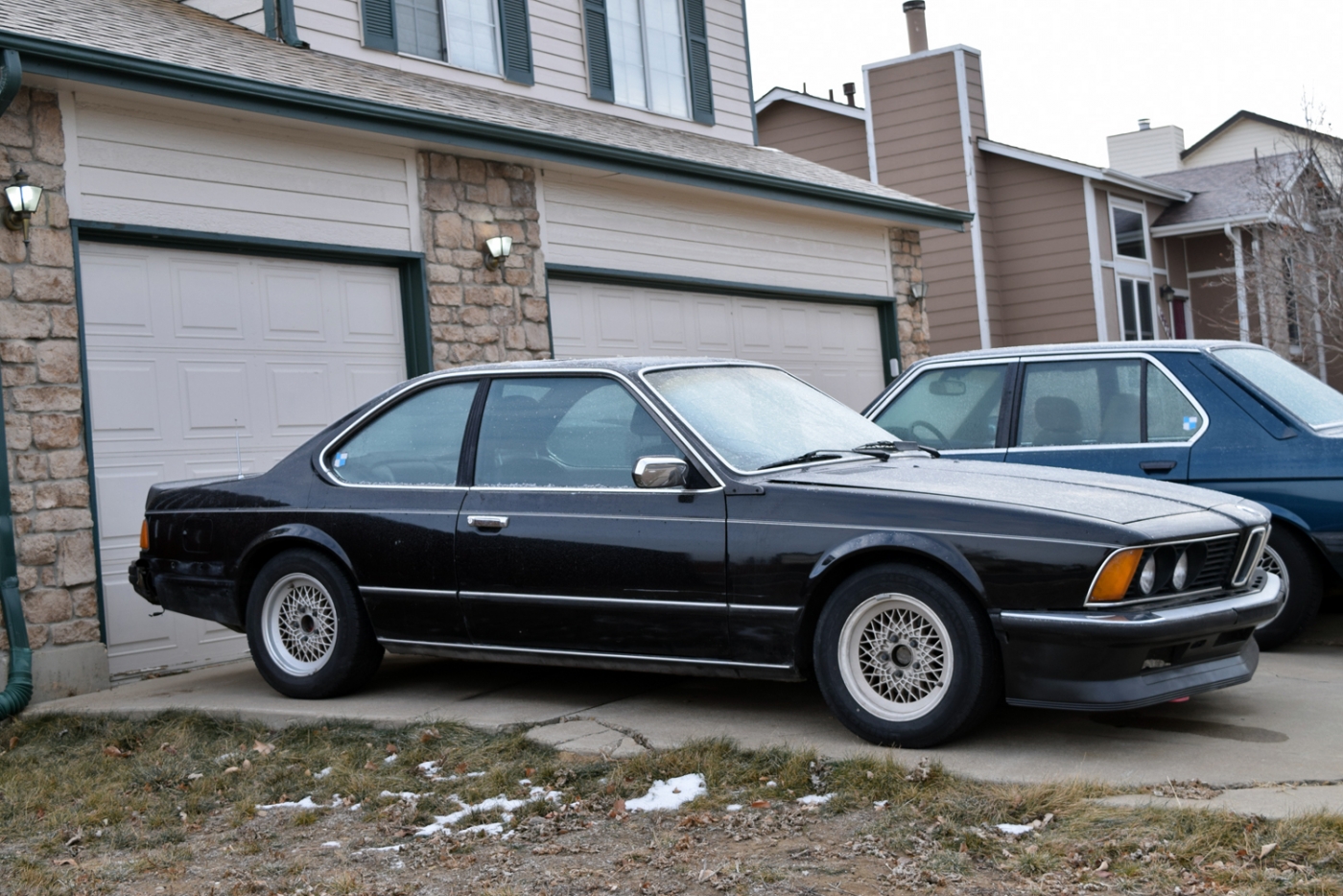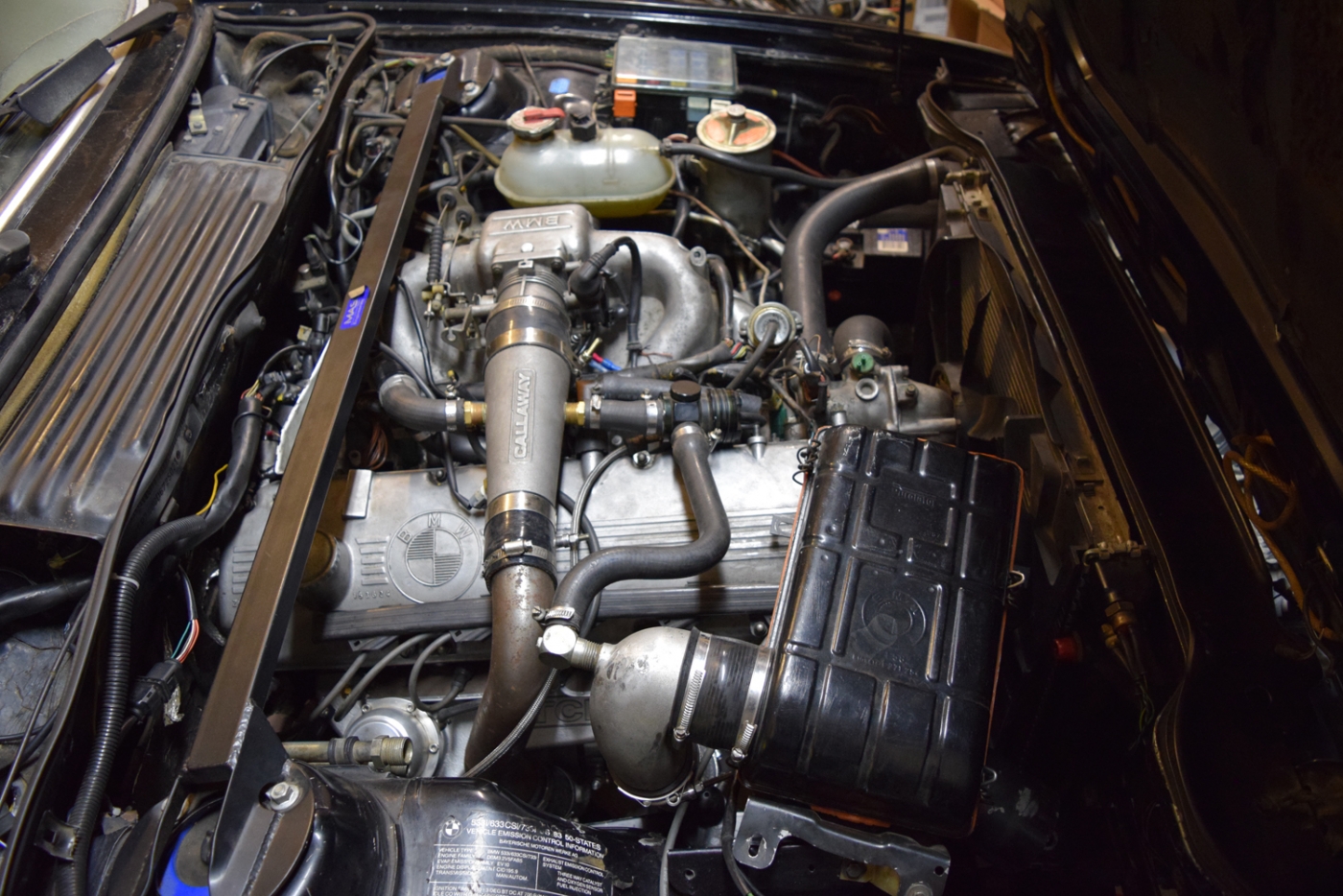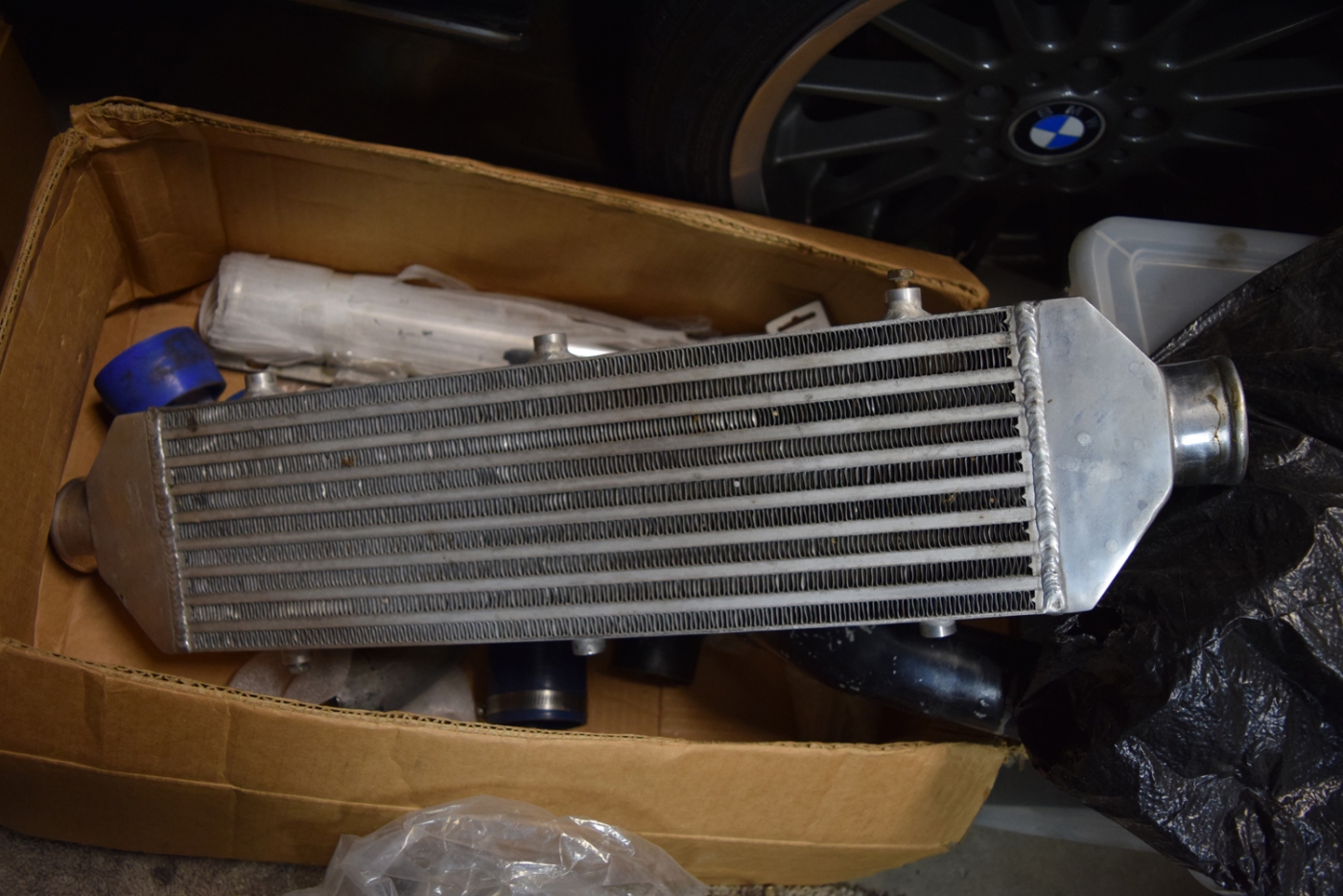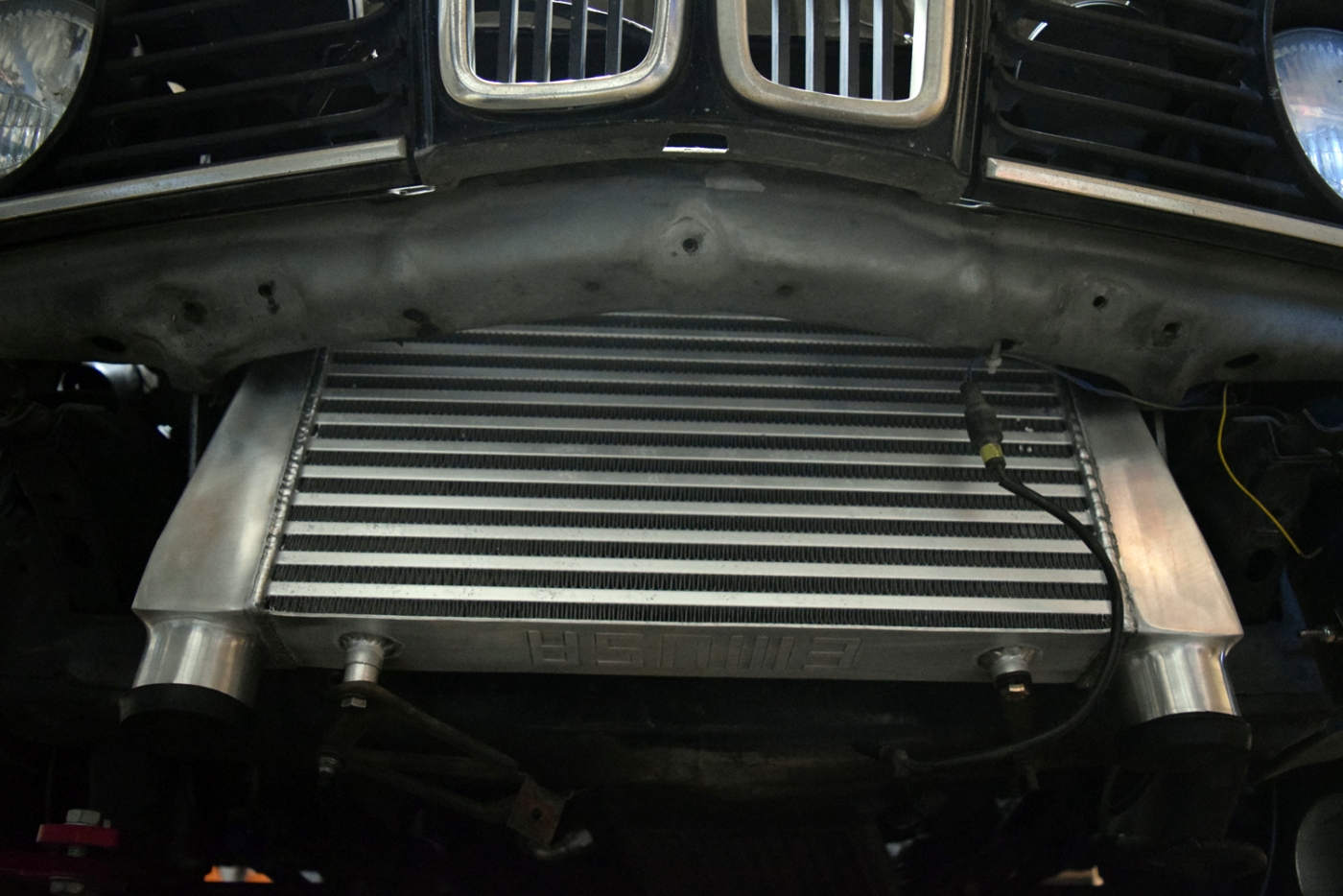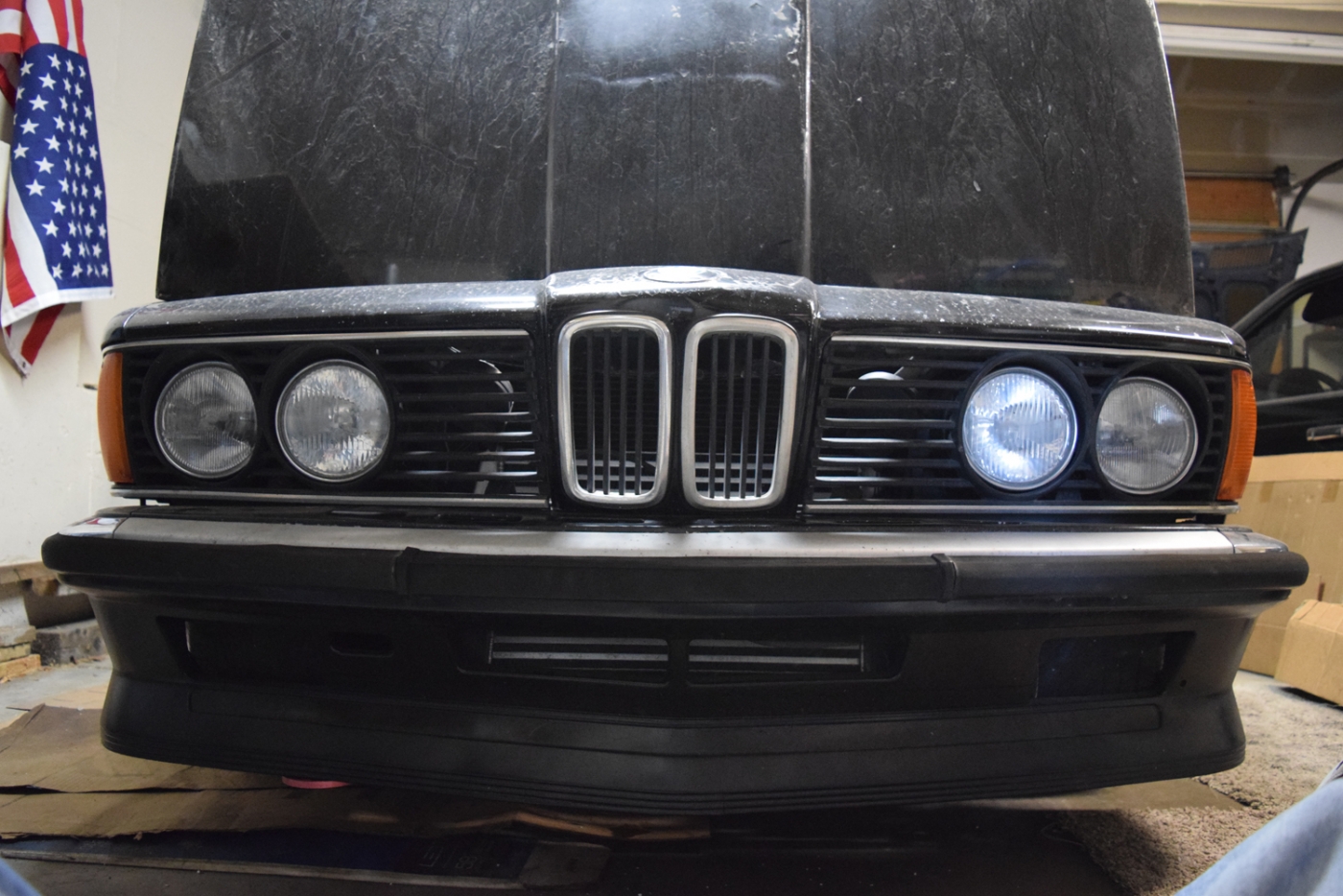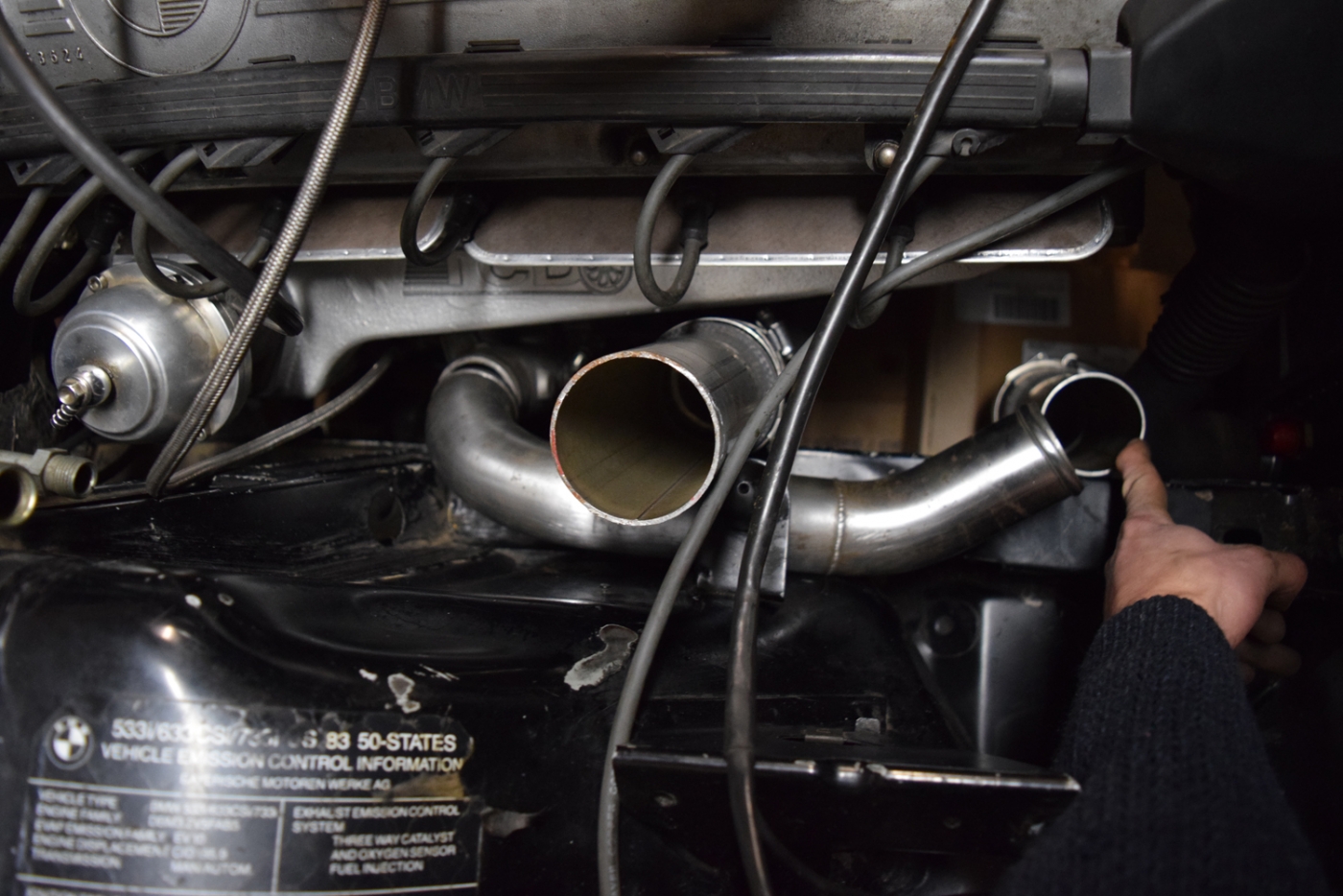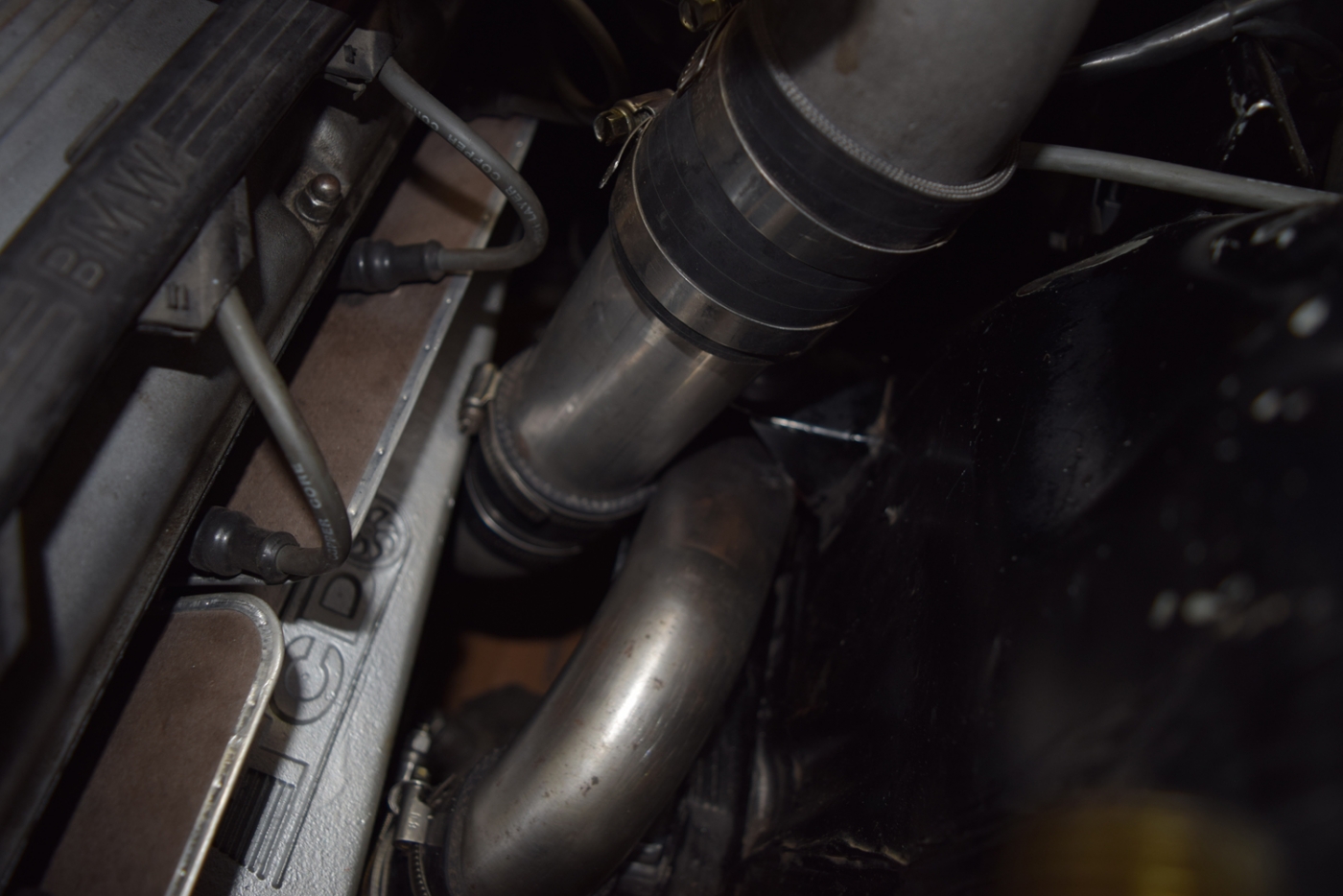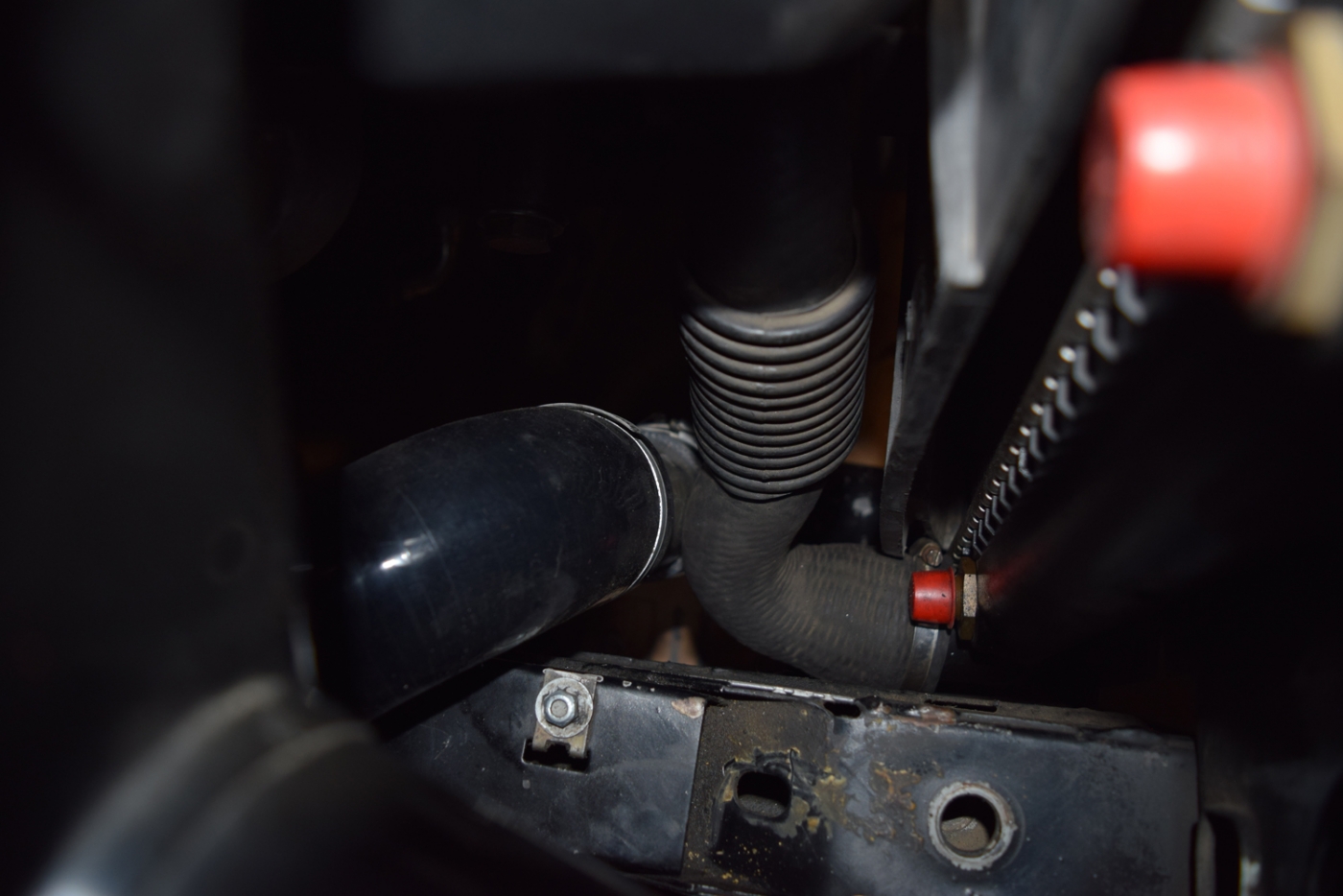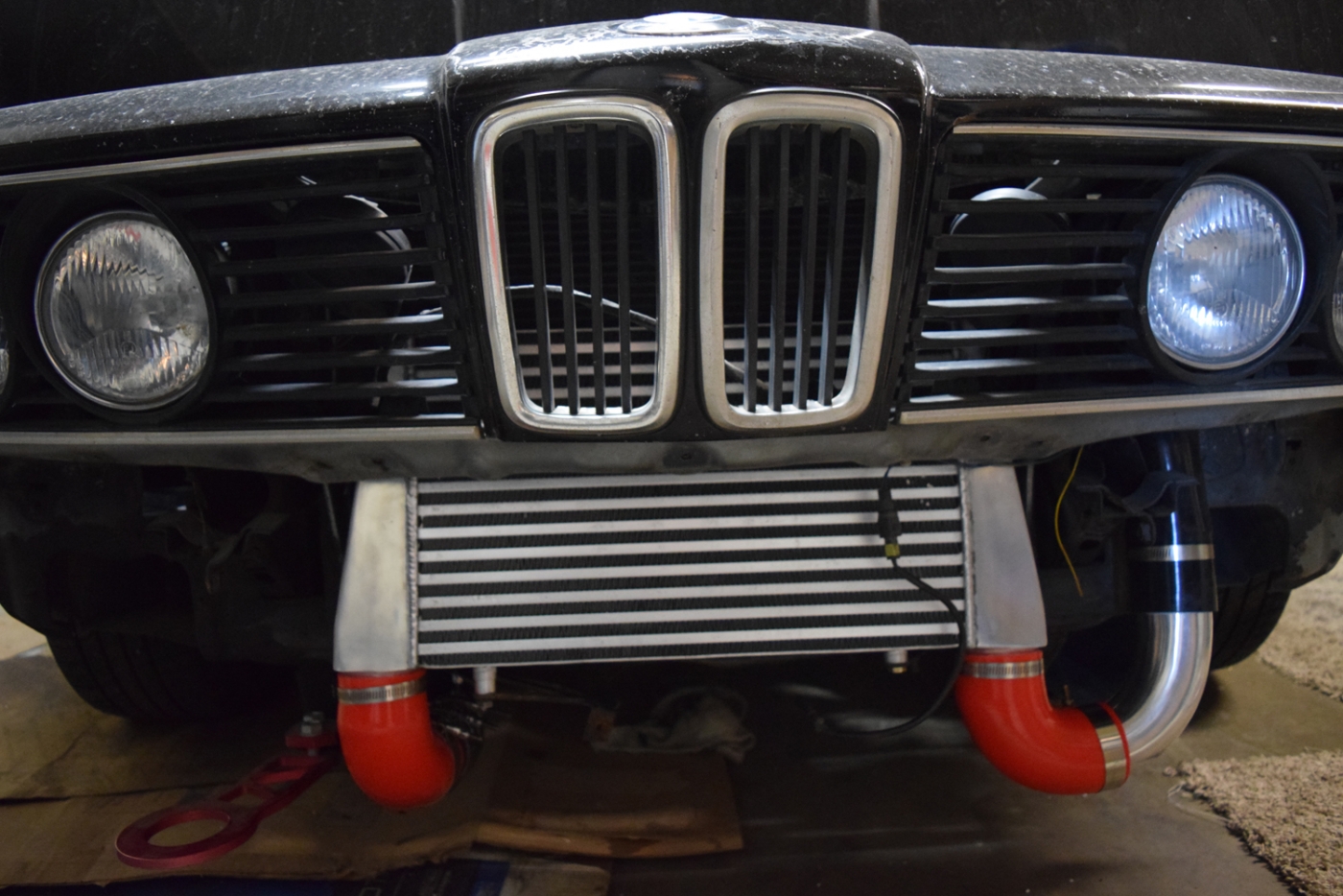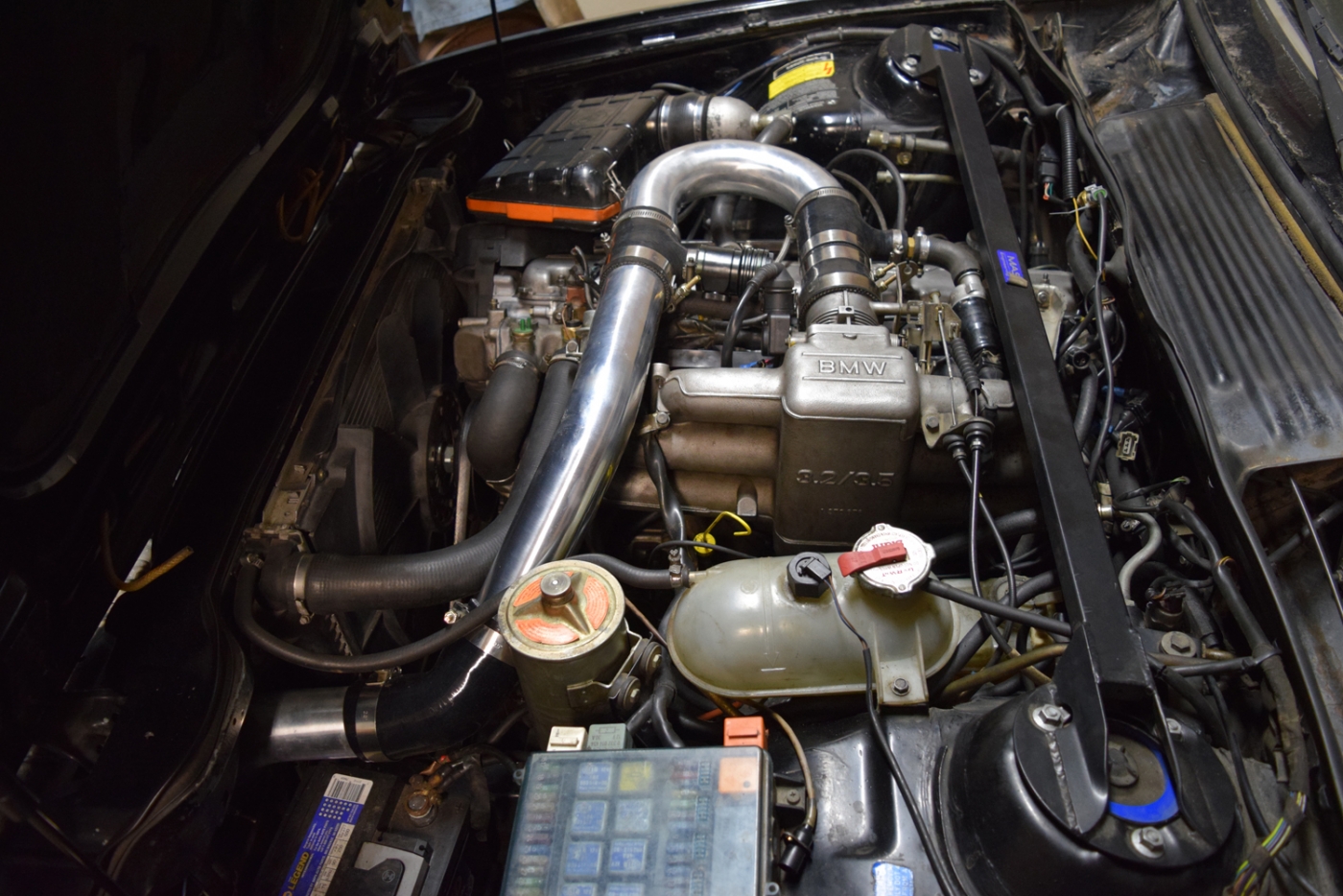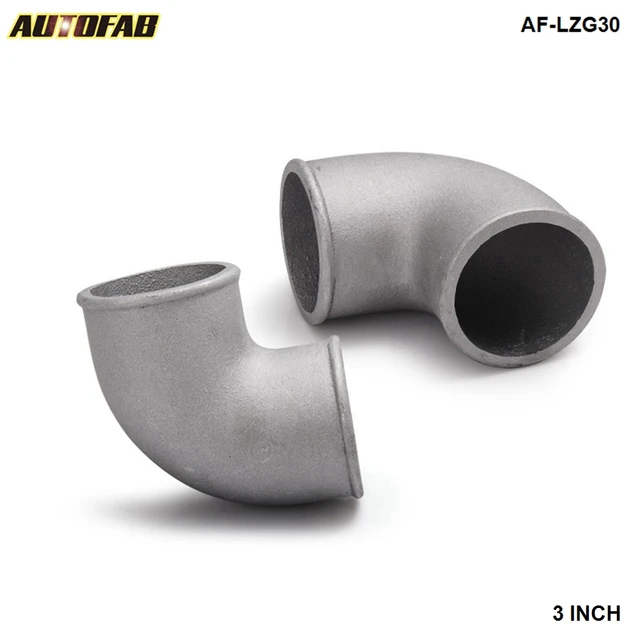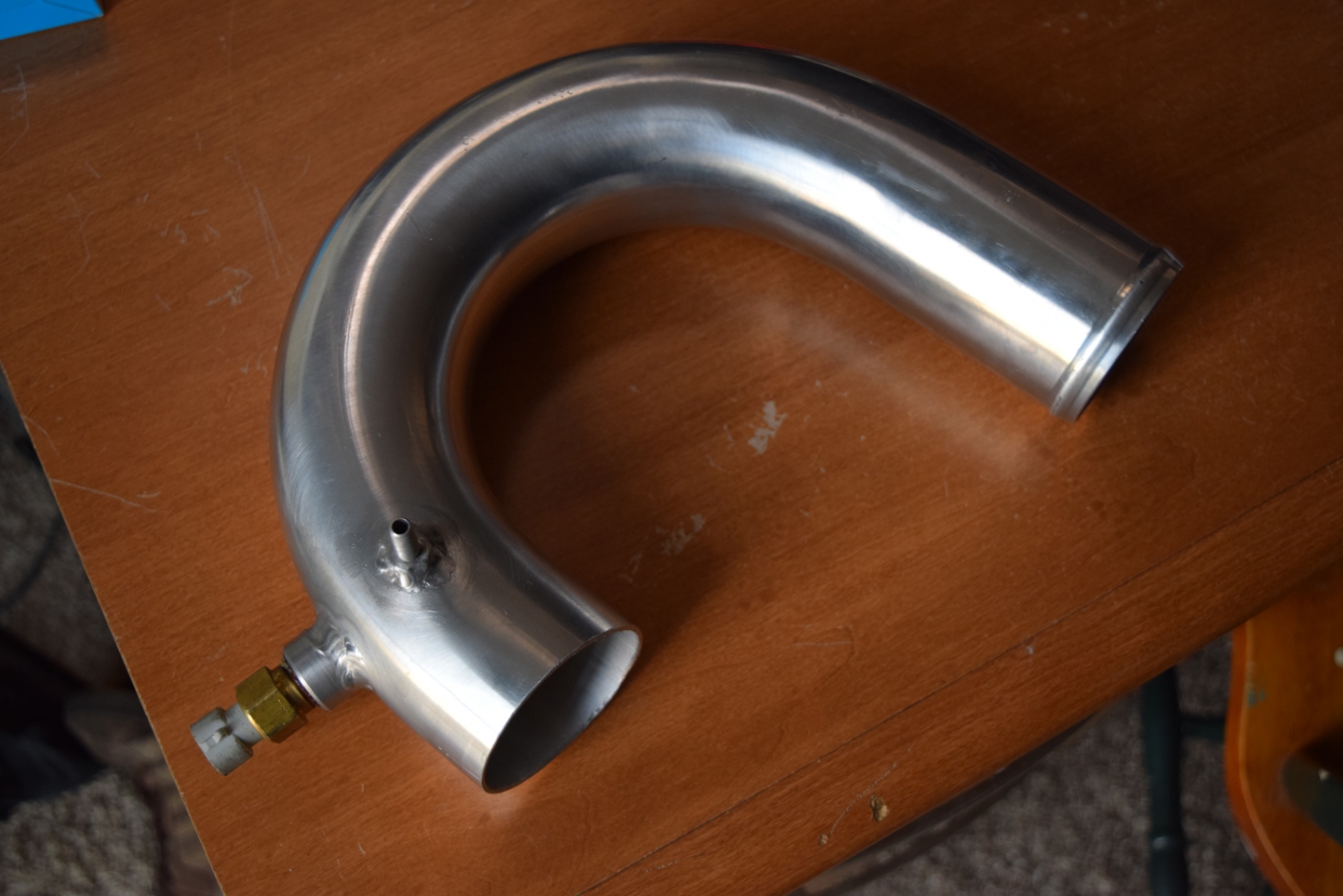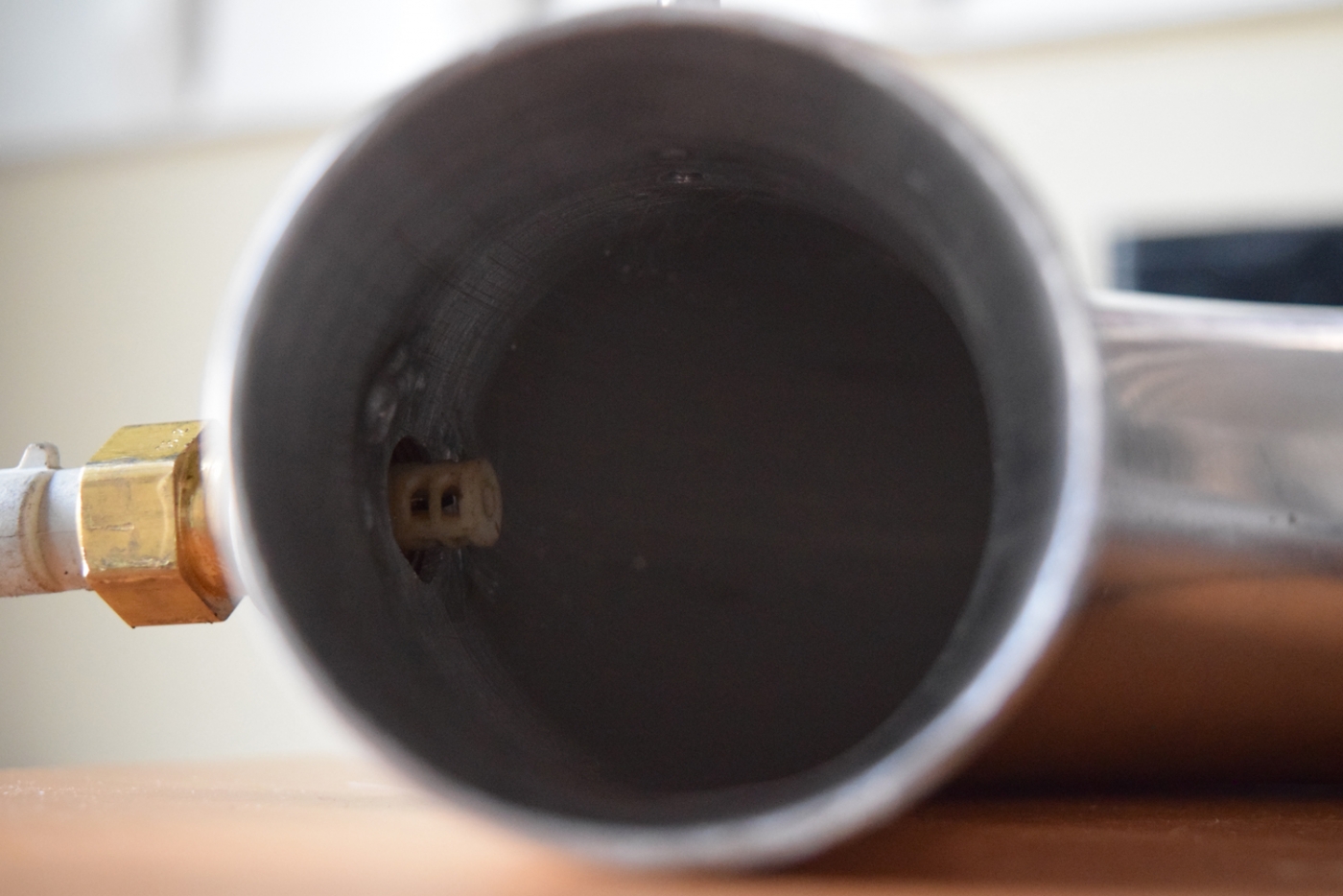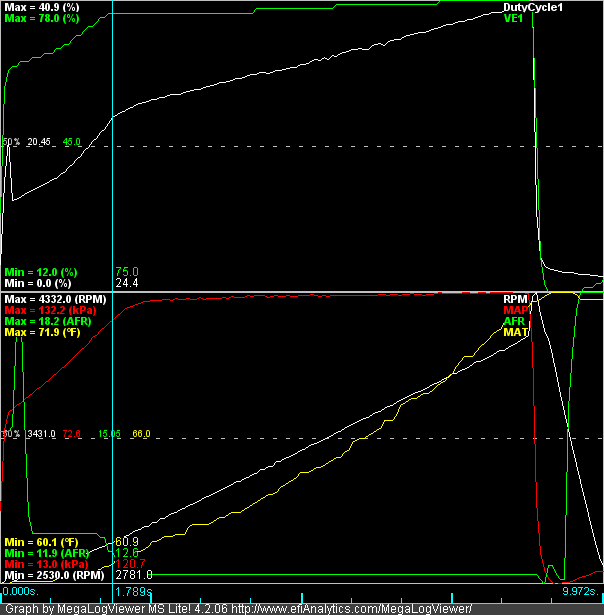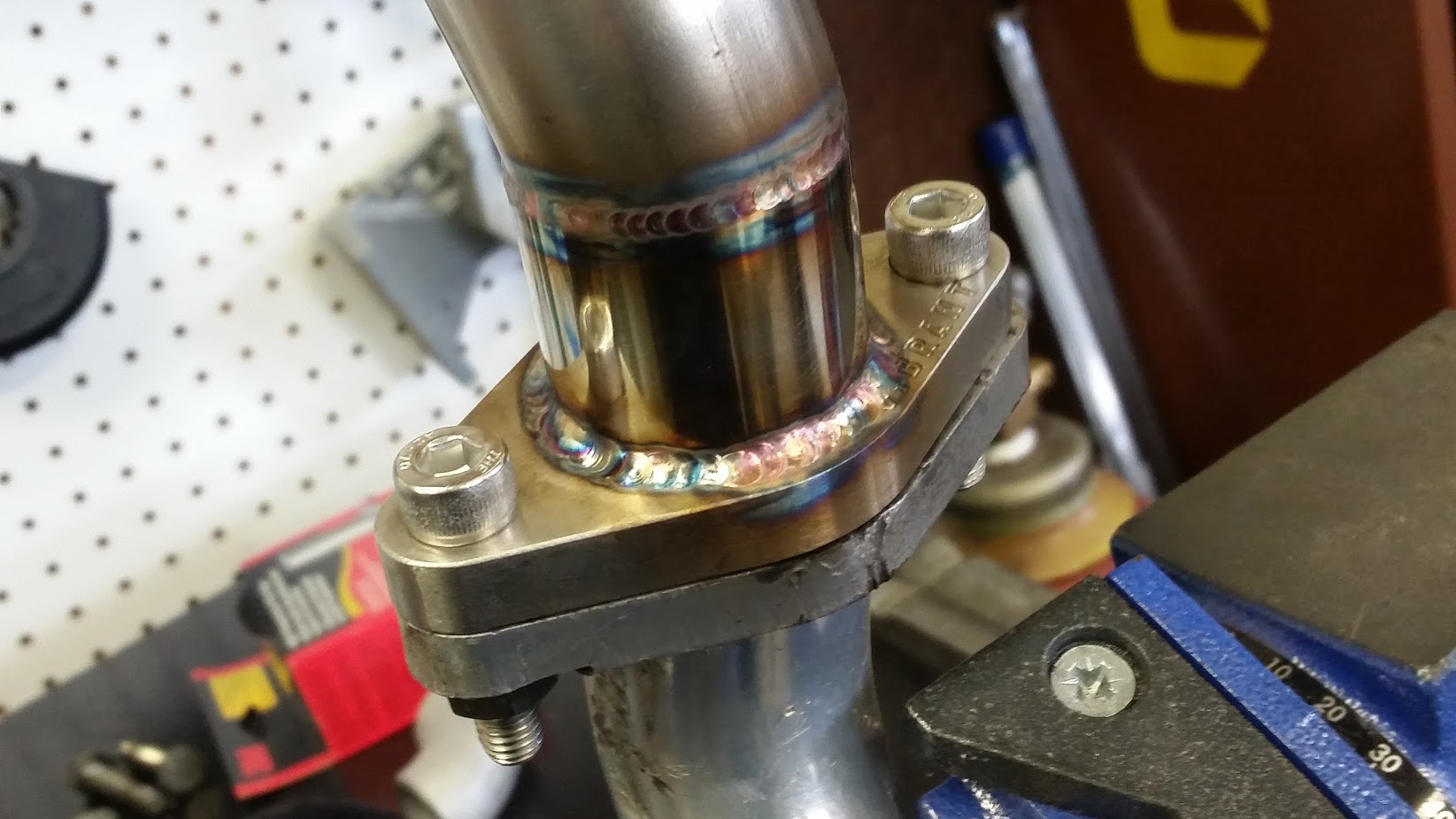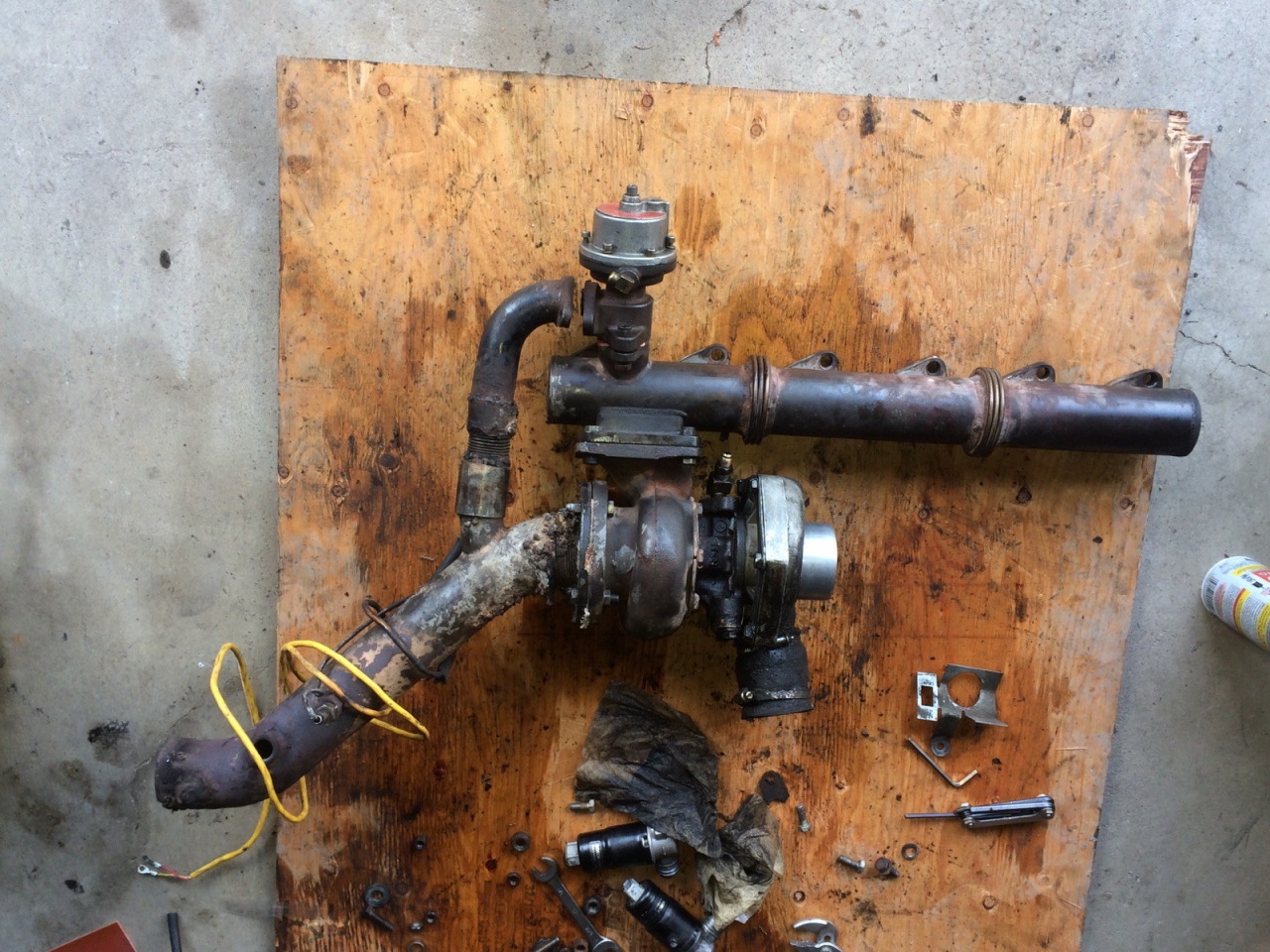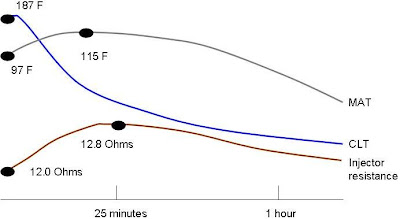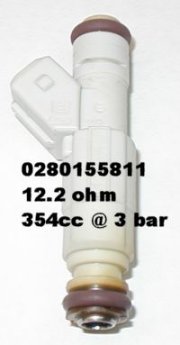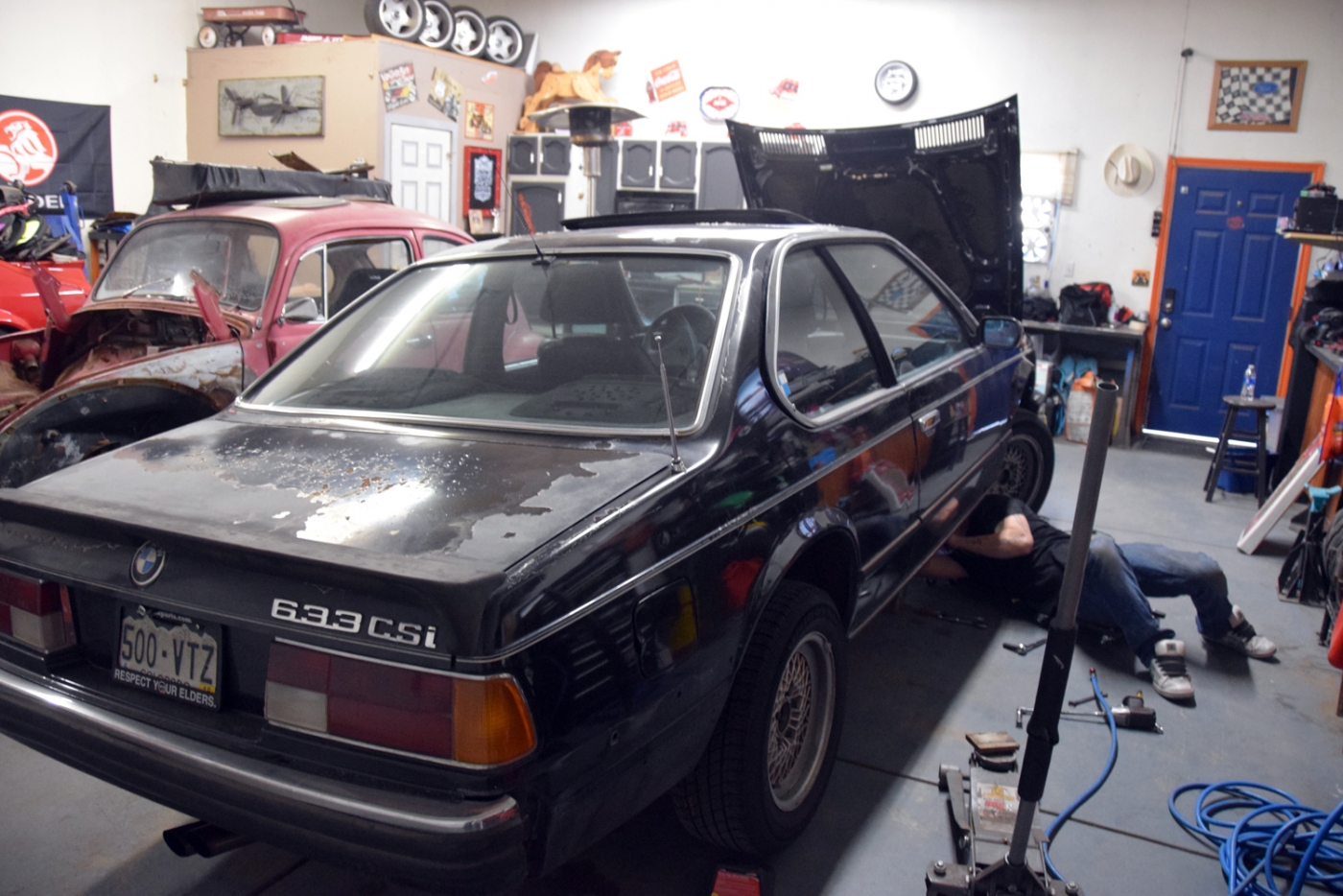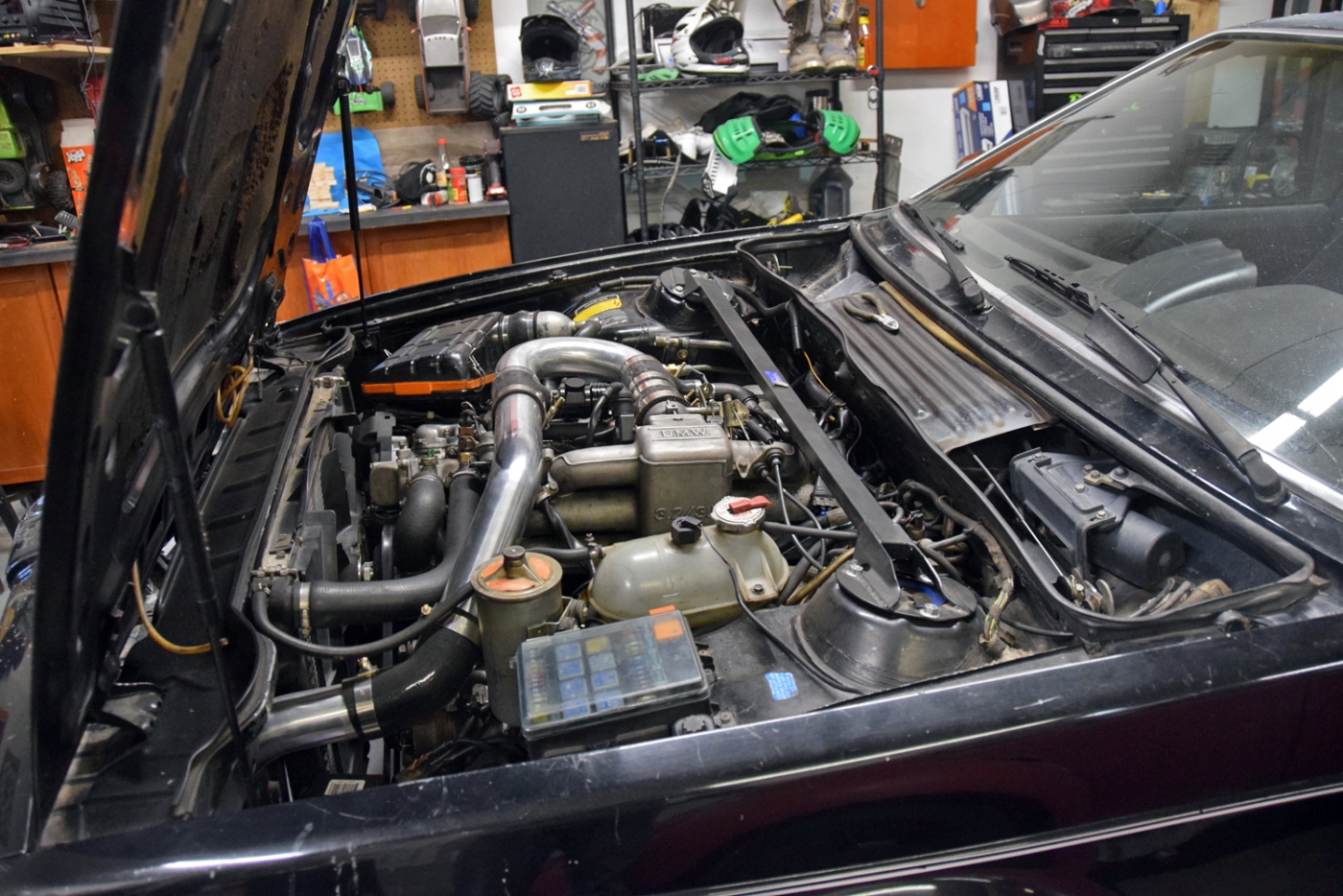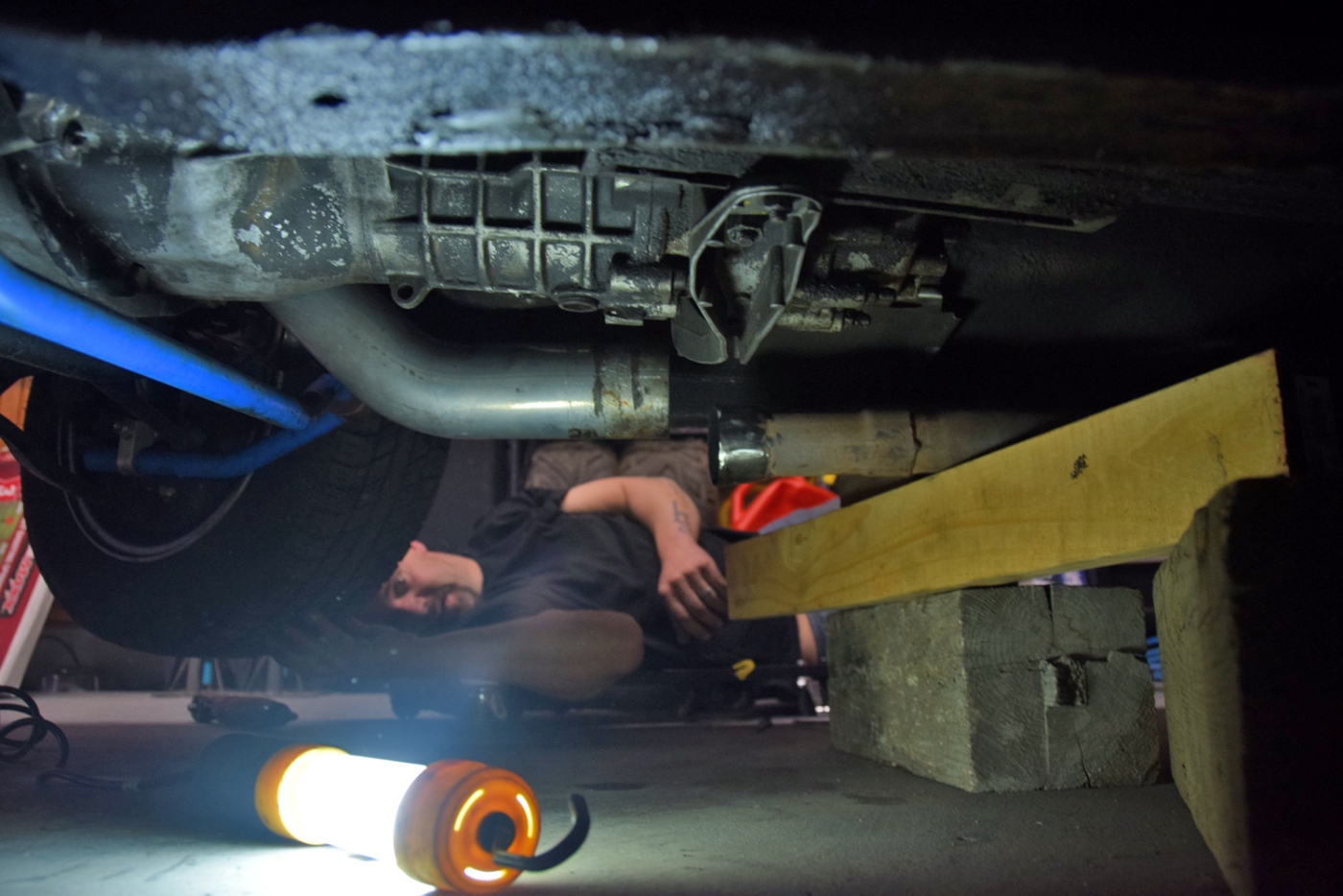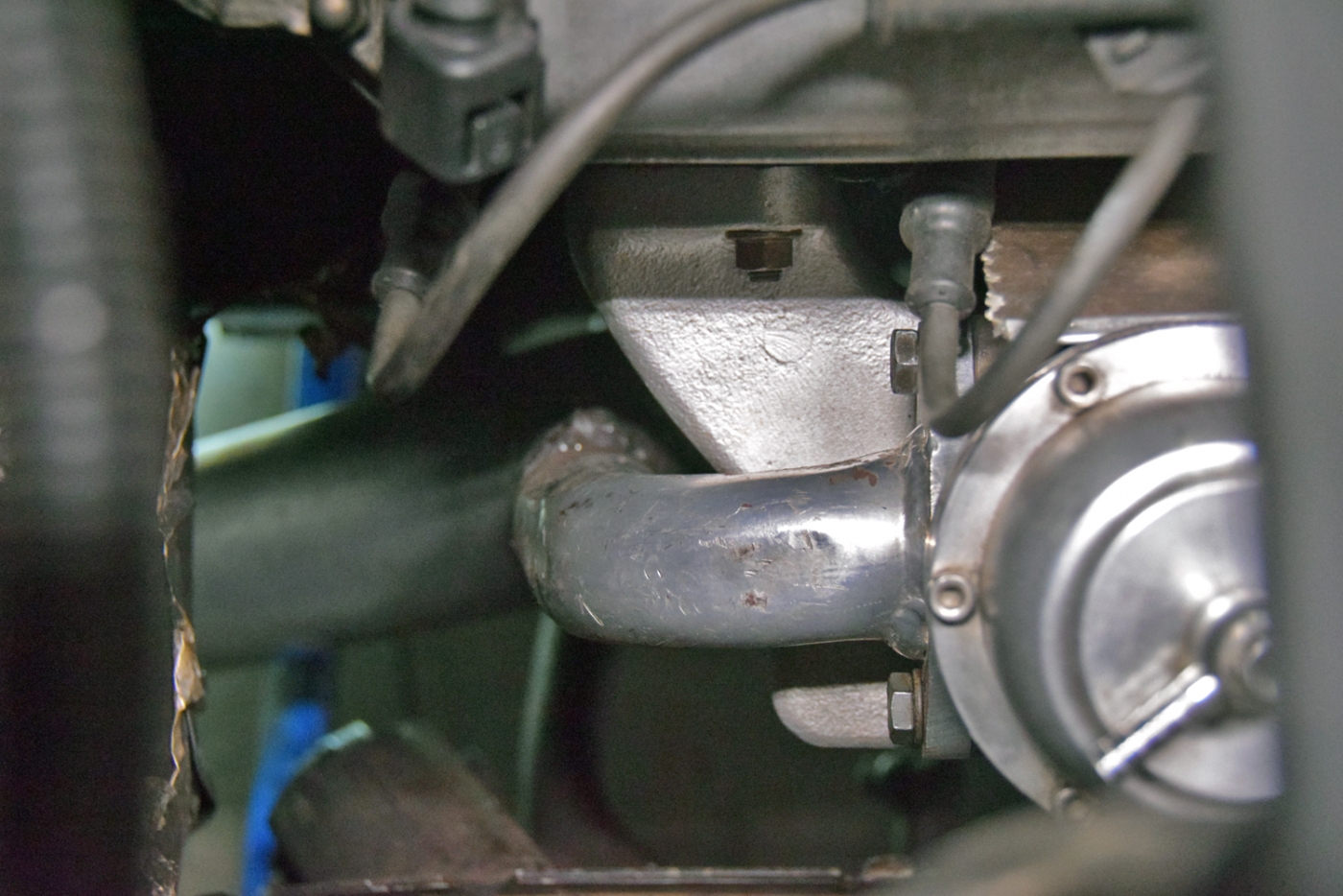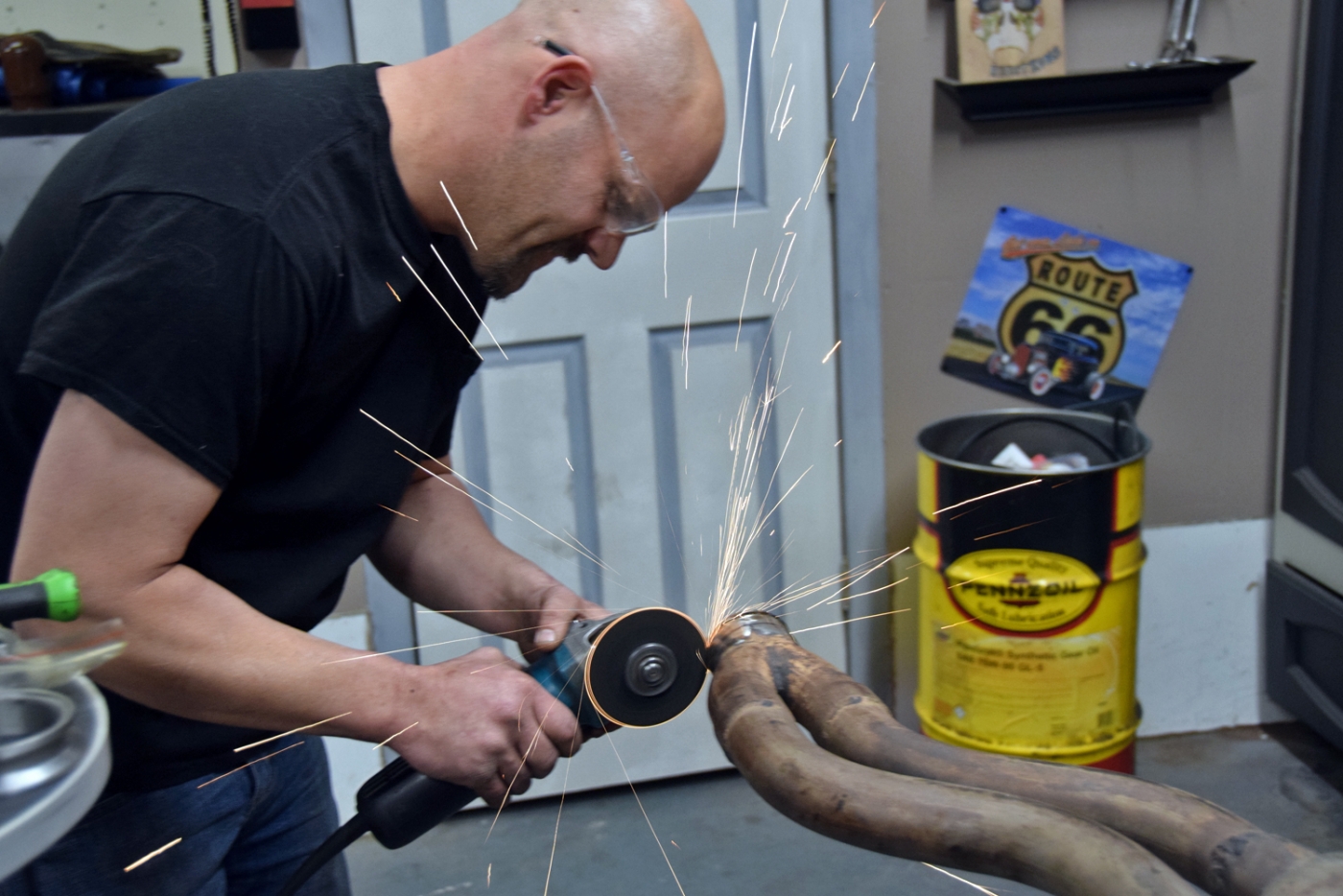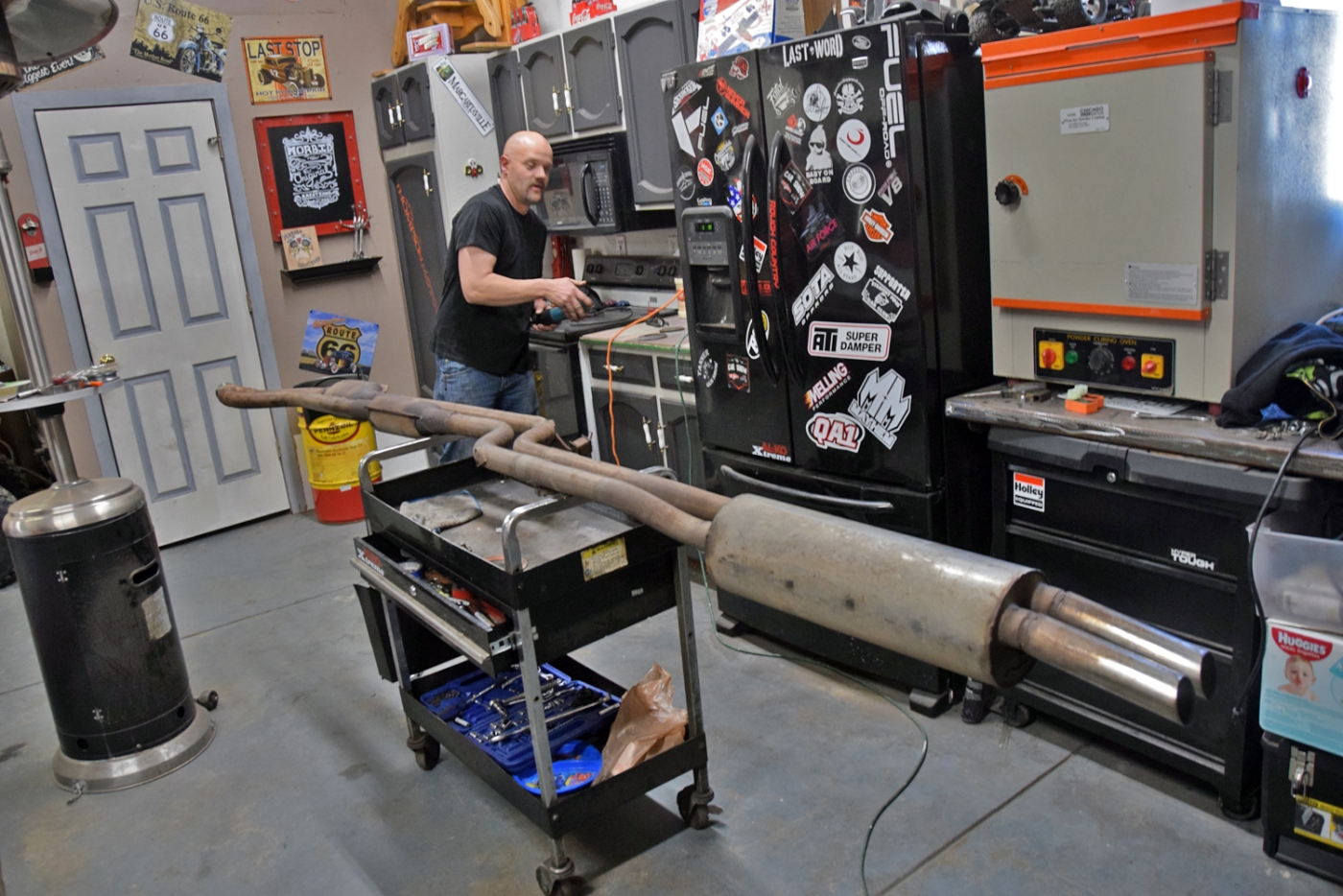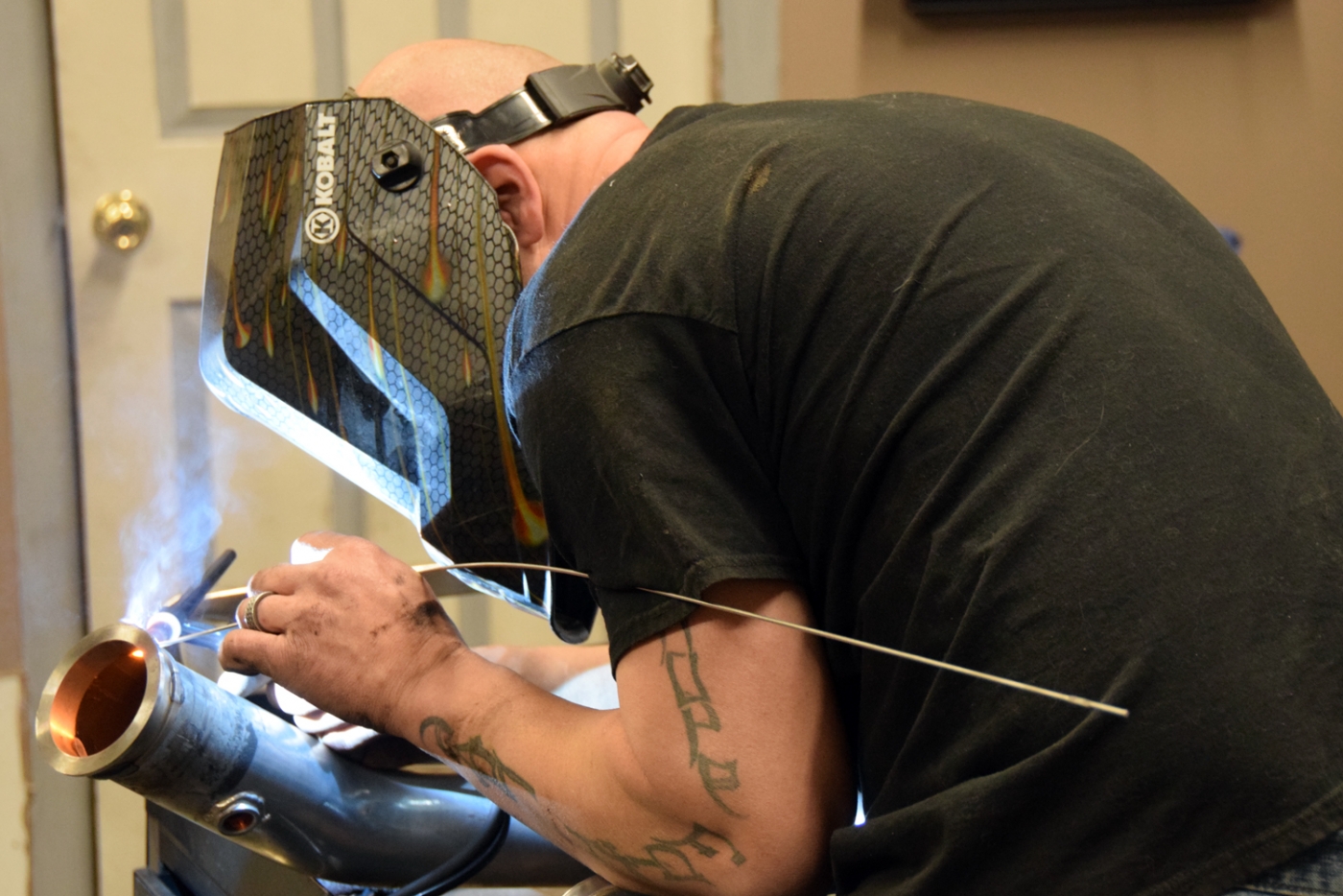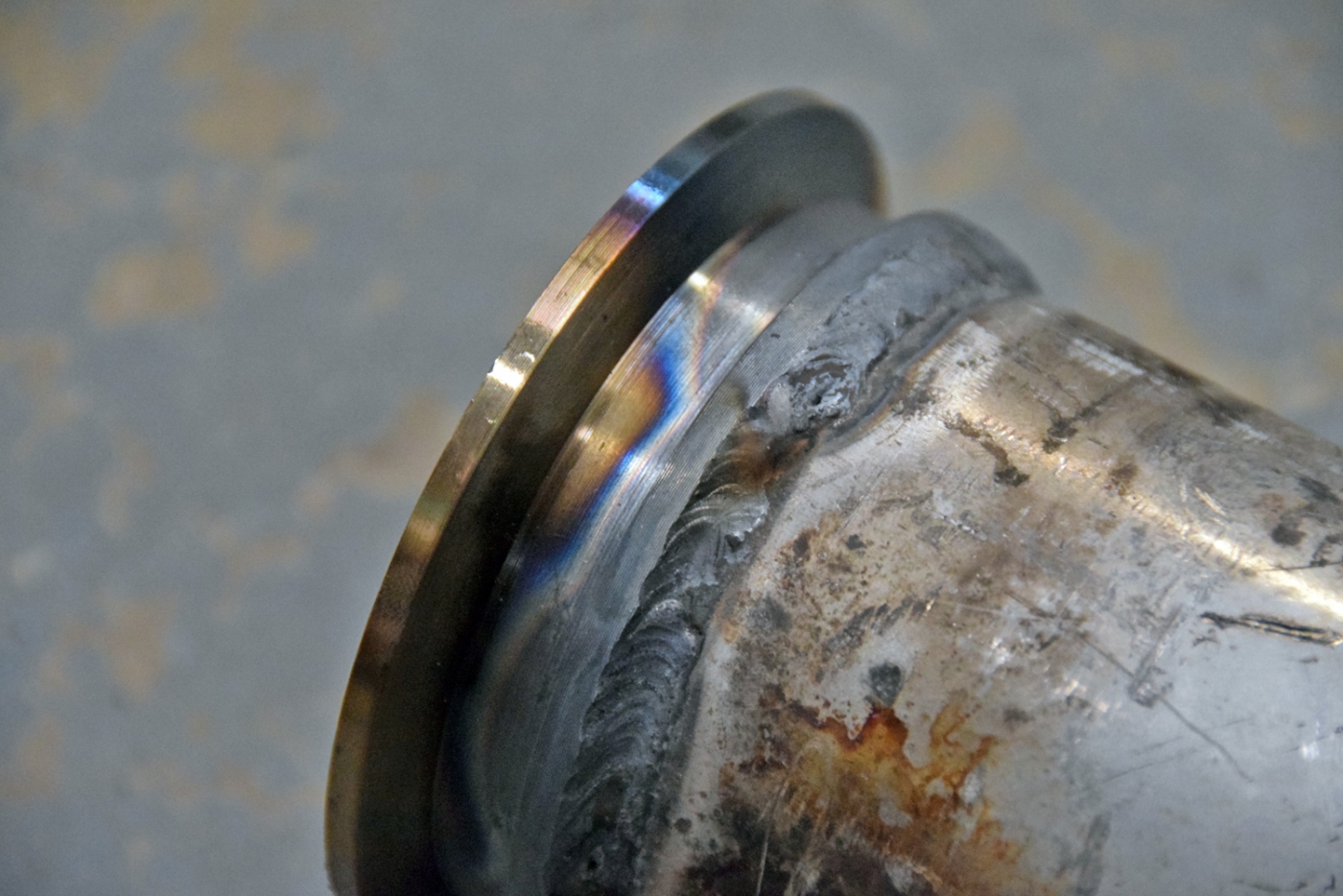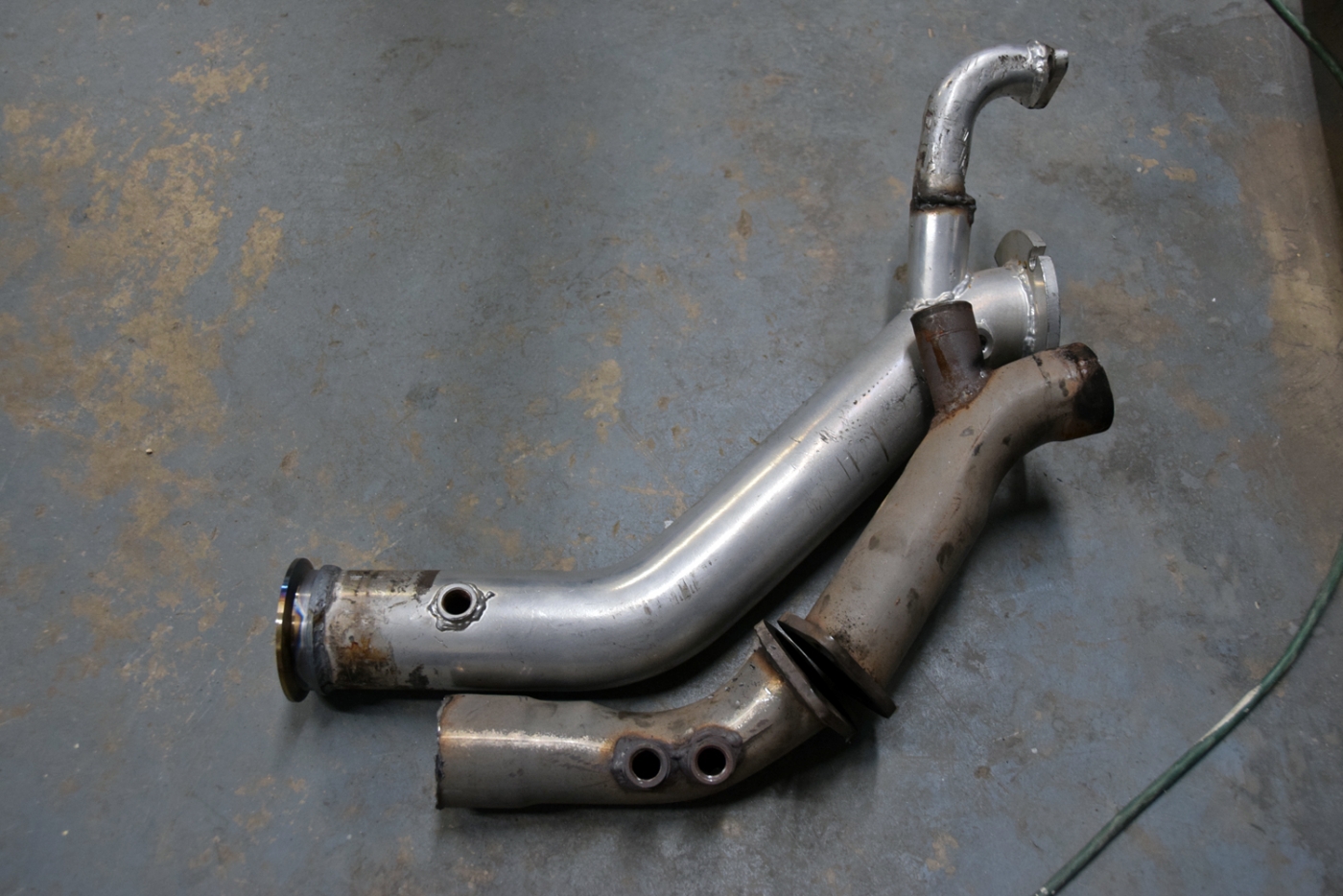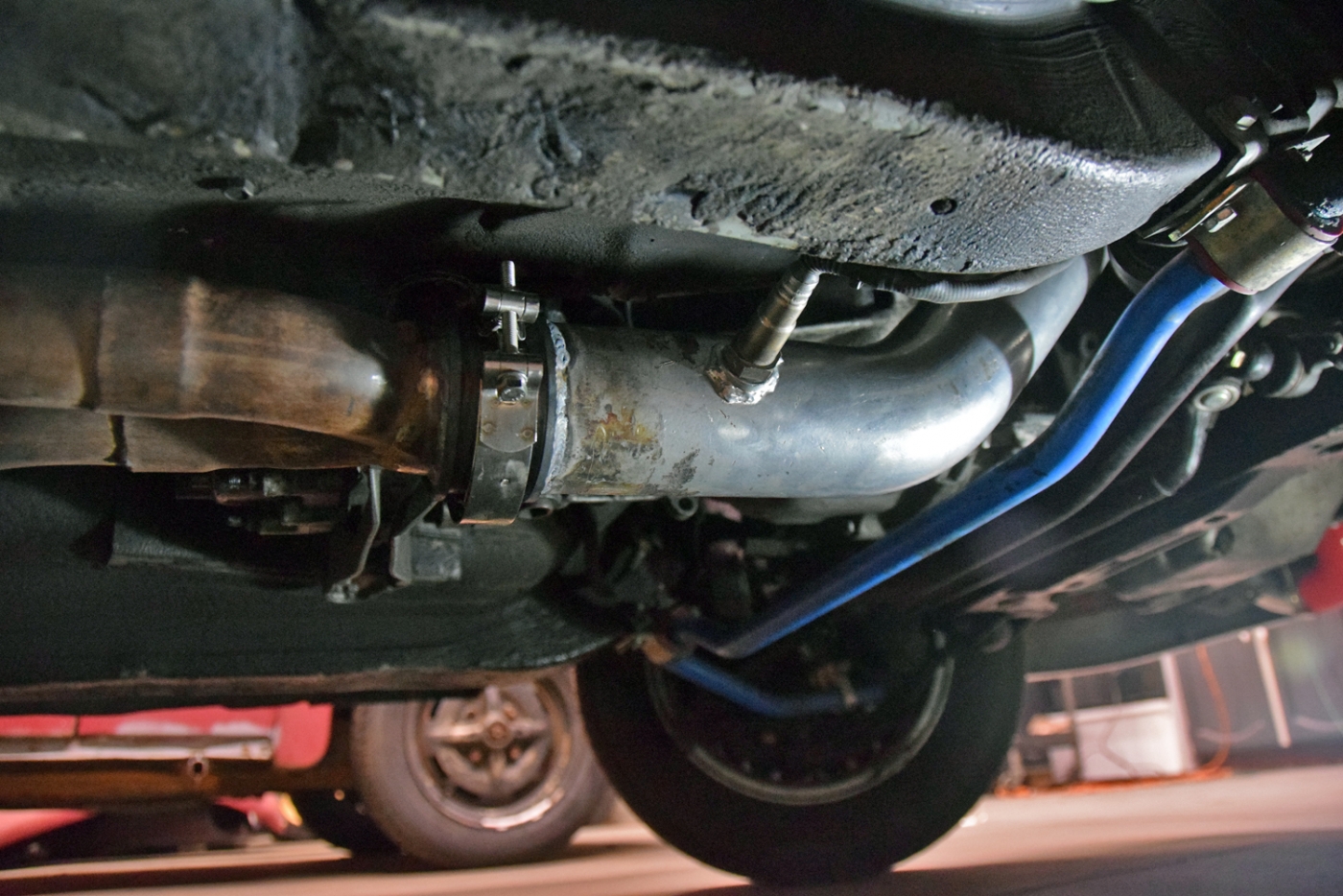So some bad news: The delayed update is coming through because as I was tuning the MAT correction curve and general driveability, this happened.
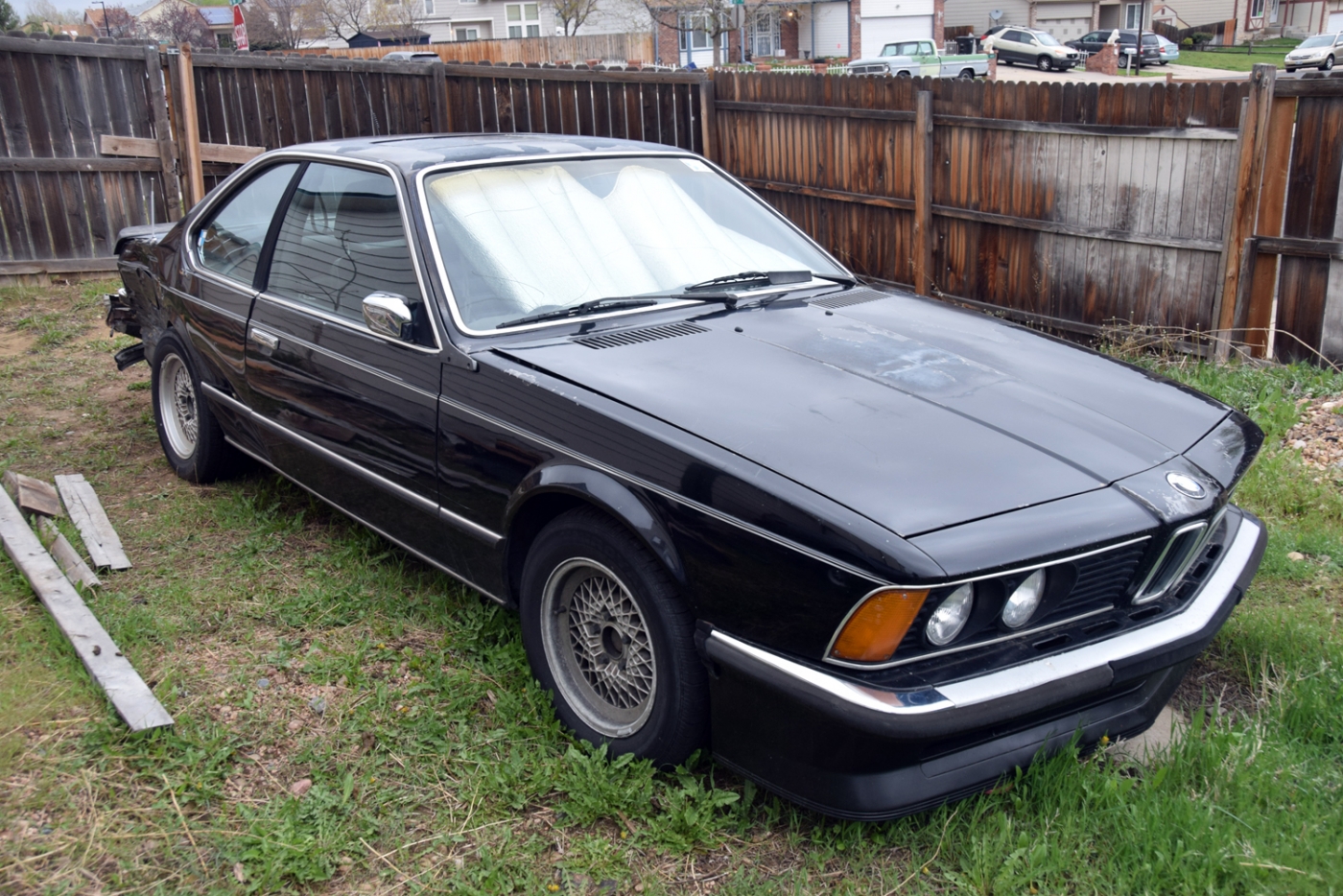
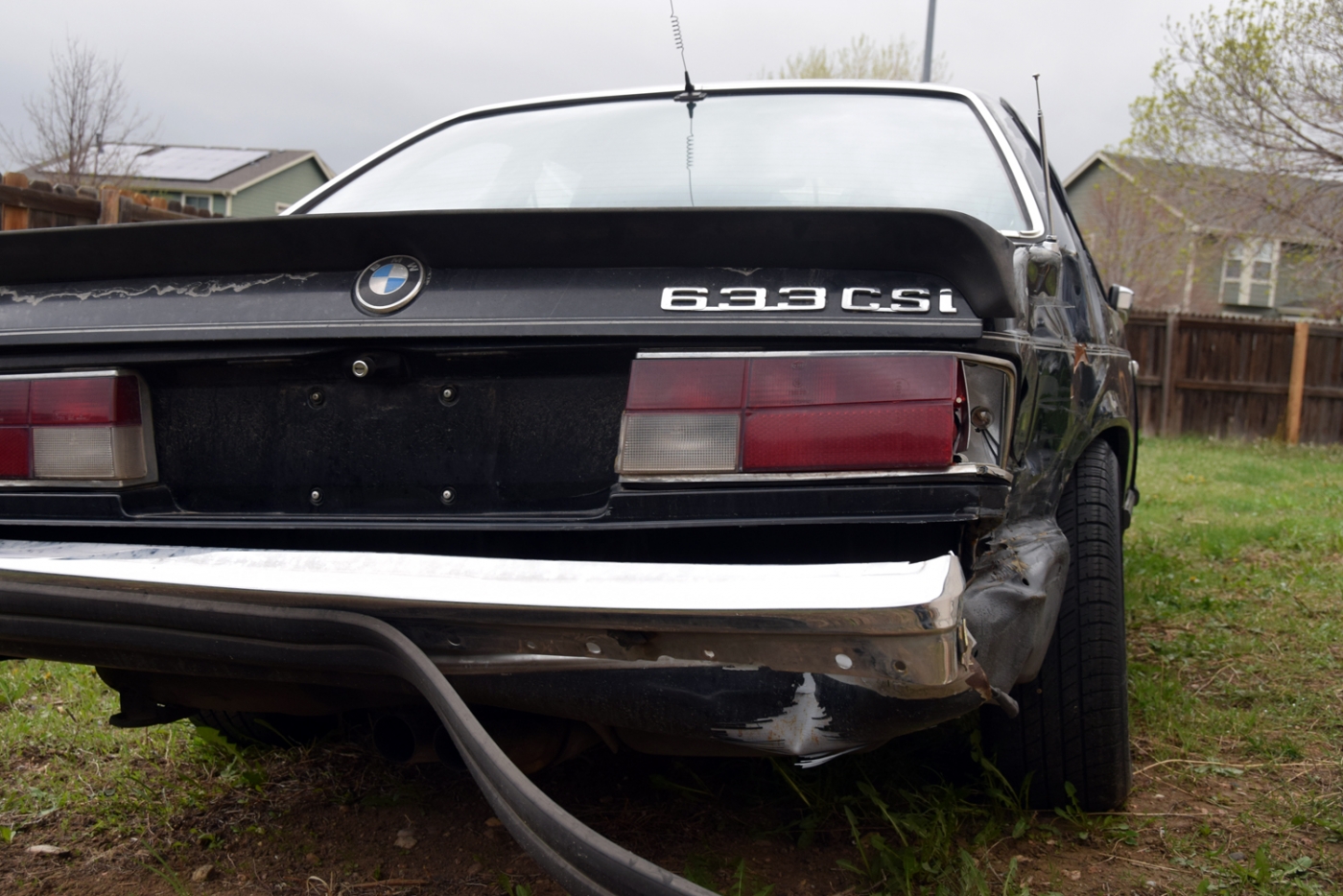
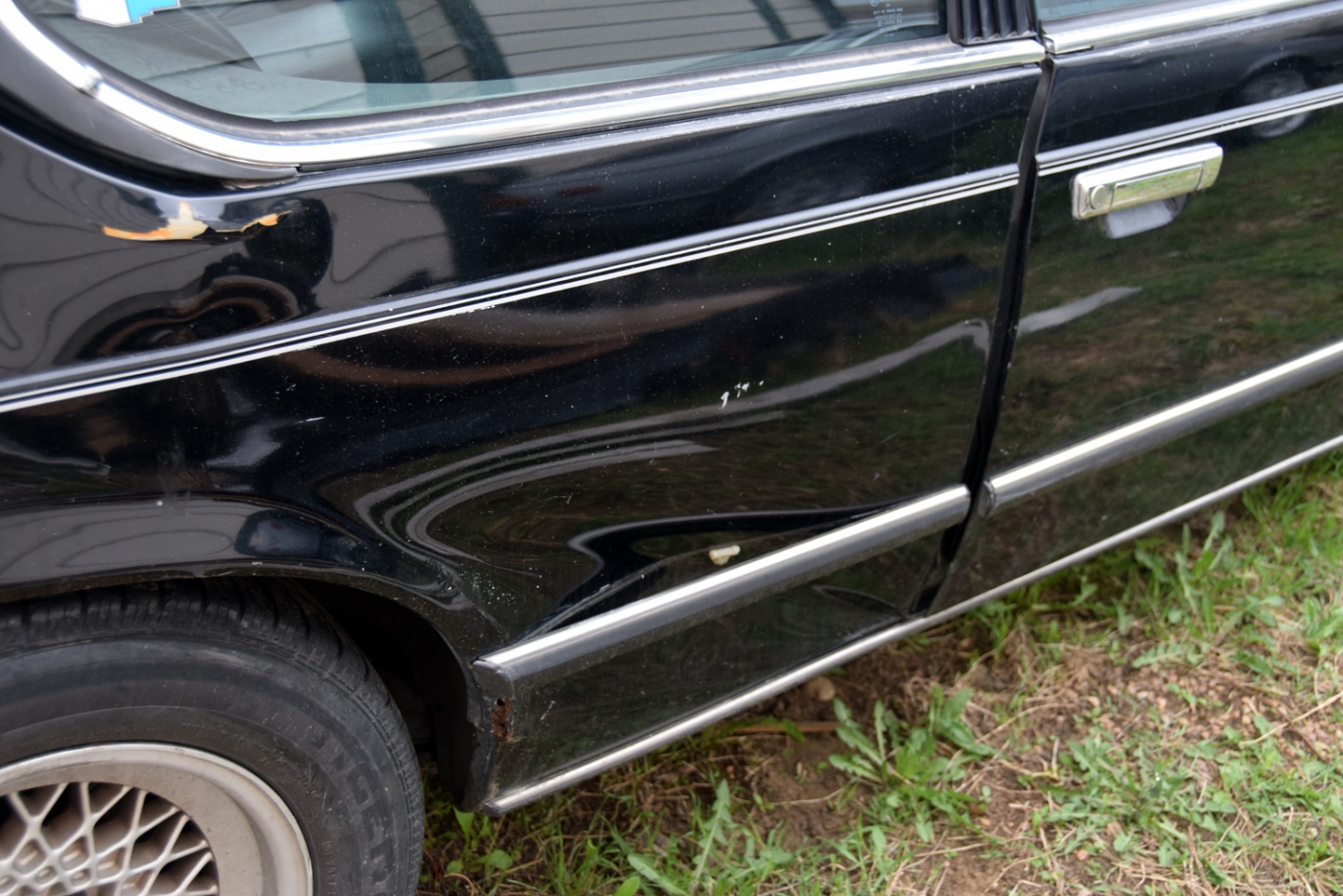
You can probably guess by the nature of the hit that the car won't be fixable and the cause of the collision may put me at fault. I was making a left turn and apparently did not see an incoming tuck. He didn't seem to see me either as he didn't hit the brakes or swerve in any capacity. This is my first major accident...
My wife and I were both fine and the car was still driveable minus some extra wind noise and tire rubbing on the way back home.
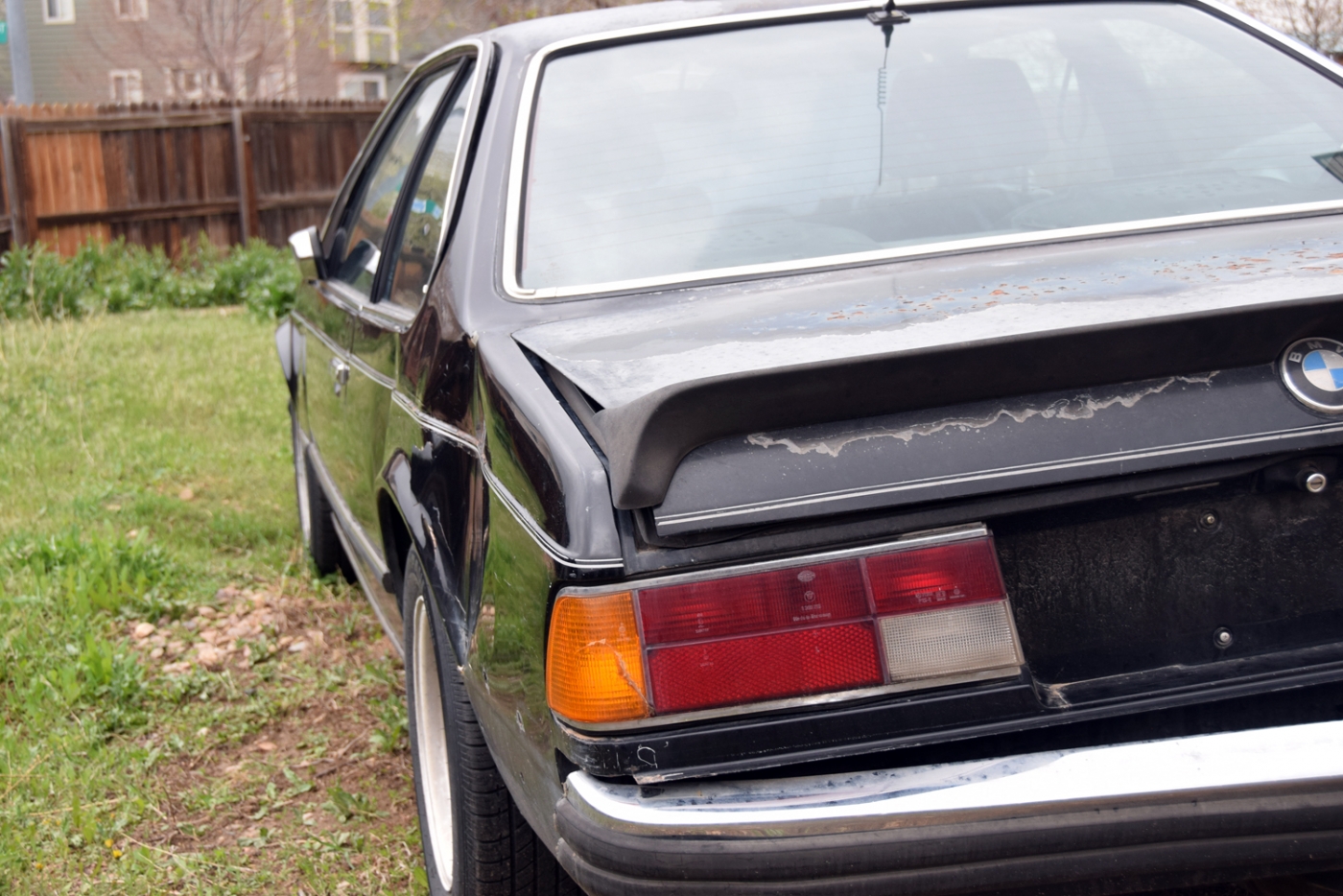
I carry liability only, not comprehensive insurance, so I am on the hook for the repair. Which is fair-- if I was at fault I wanted to have to deal with the repairs (and save some $$ in the mean time).
I was really bummed bout it and was just getting it drivable to the point that I wanted to consider a repaint or other

After thinking about it, I have come to terms with the situation and the positives being that we were not injured, the expensive parts on the car are all fine, mechanically almost everything except the rear bumper and maybe gas tank will be usable in a new chassis.
Speaking of a new chassis, this car literally fell into my lap just before the accident. I had saved it from sure death being parted out and am slowly bringing it back:
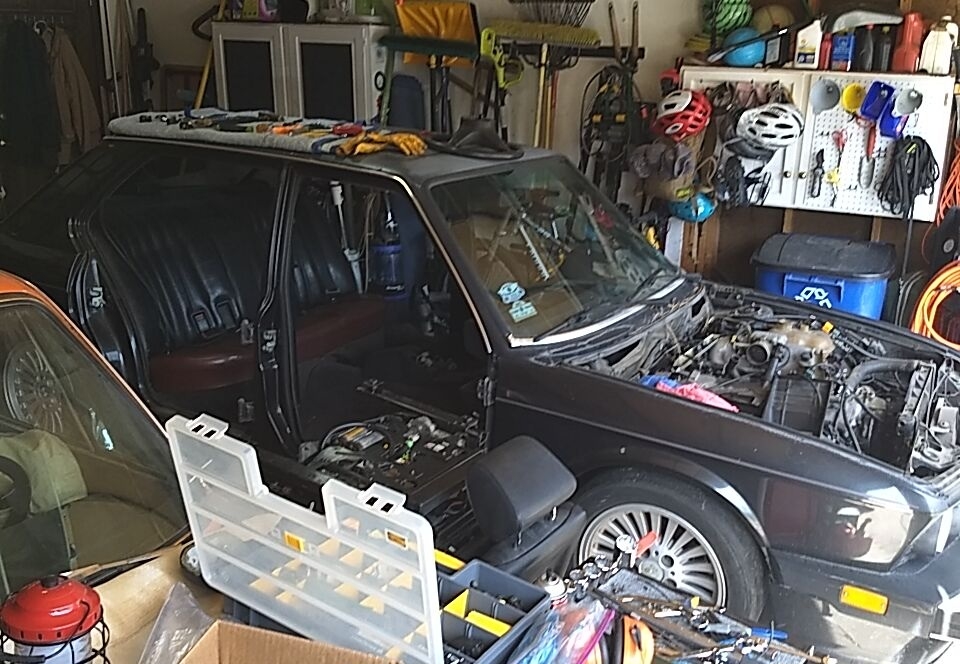
Did some searching on the previous owner to who I bought it from and found that this was Andy's car (Andy535iyes) from about 2008. It doesn't look like much maintenance has been performed since then, but here is the FS thread and a photo a decade ago.
http://www.mye28.com/viewtopic.php?t=54137
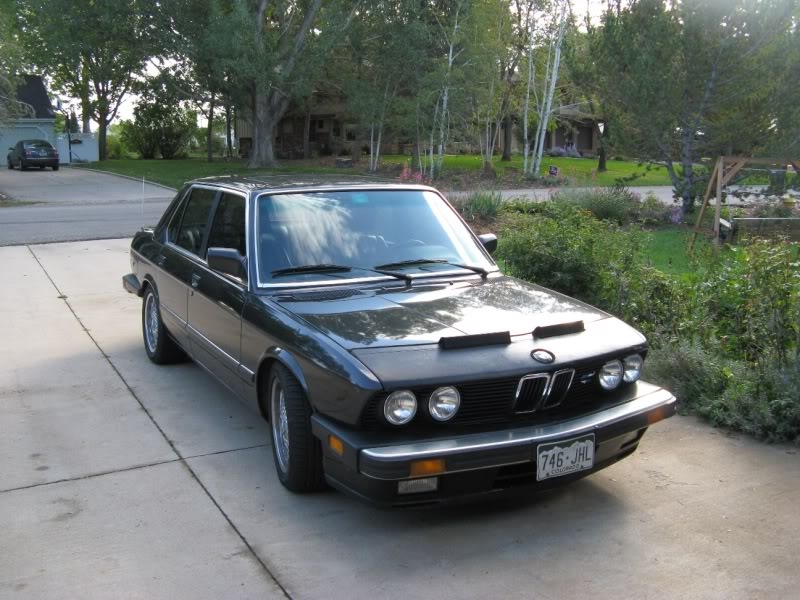
Come to find out it doesn't have all the parts, but does have larger sway bars, larger e34 brakes, rear camber adjustment, good Bilstein's and Bav Auto springs, 3/46LSD and a rust free body

Reinstalled a couple doors for the tow home
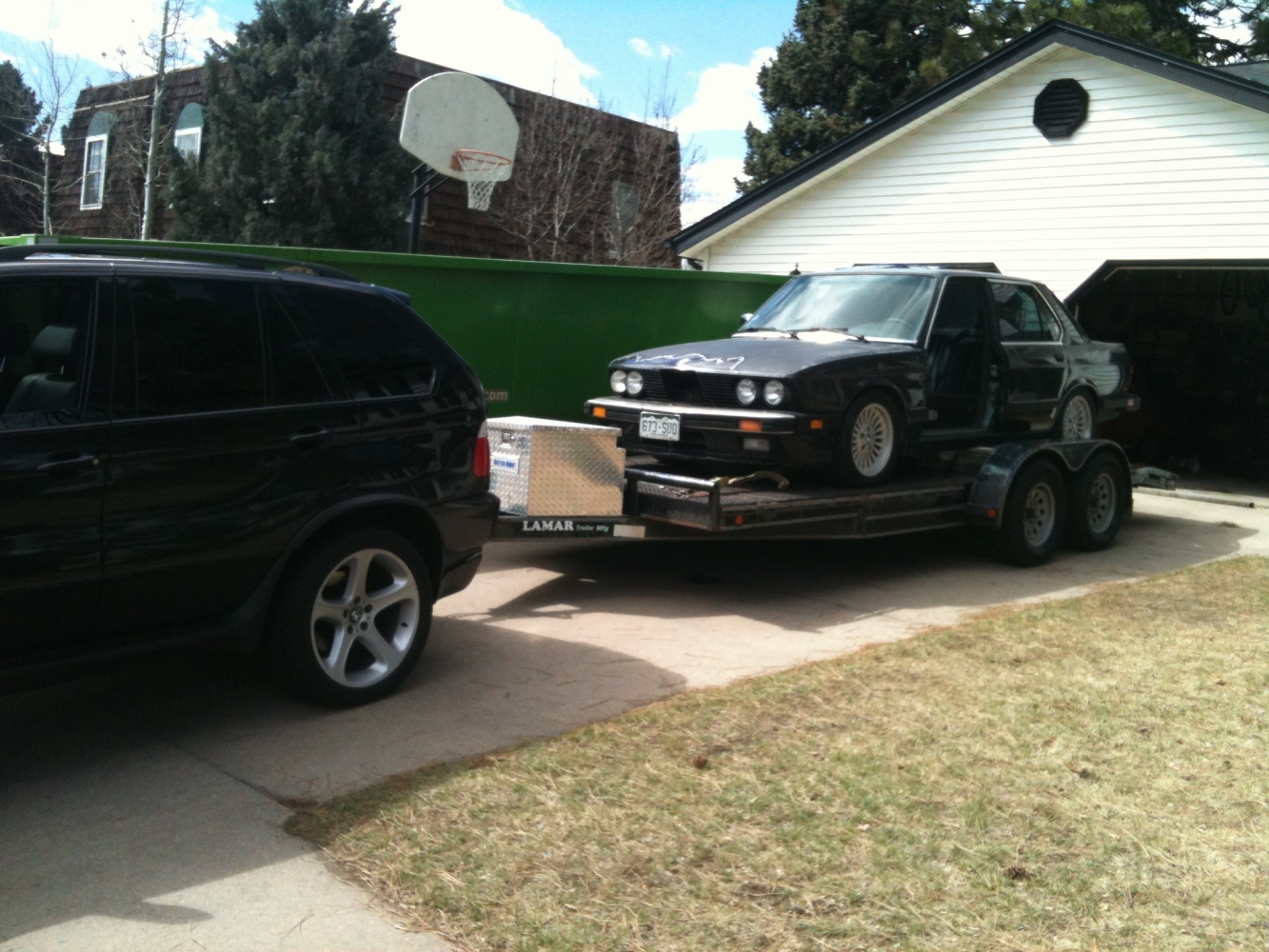
Put some wheels on it and took a short test drive.
After getting it running, the car actually drove down the road which a horrible death wobble and rear diff mount clink. Overall the exhaust on it actually sounds good and through the turns it was very stable and handled really nice. So after that first test drive I started feeling confident that this car could be a good chassis.
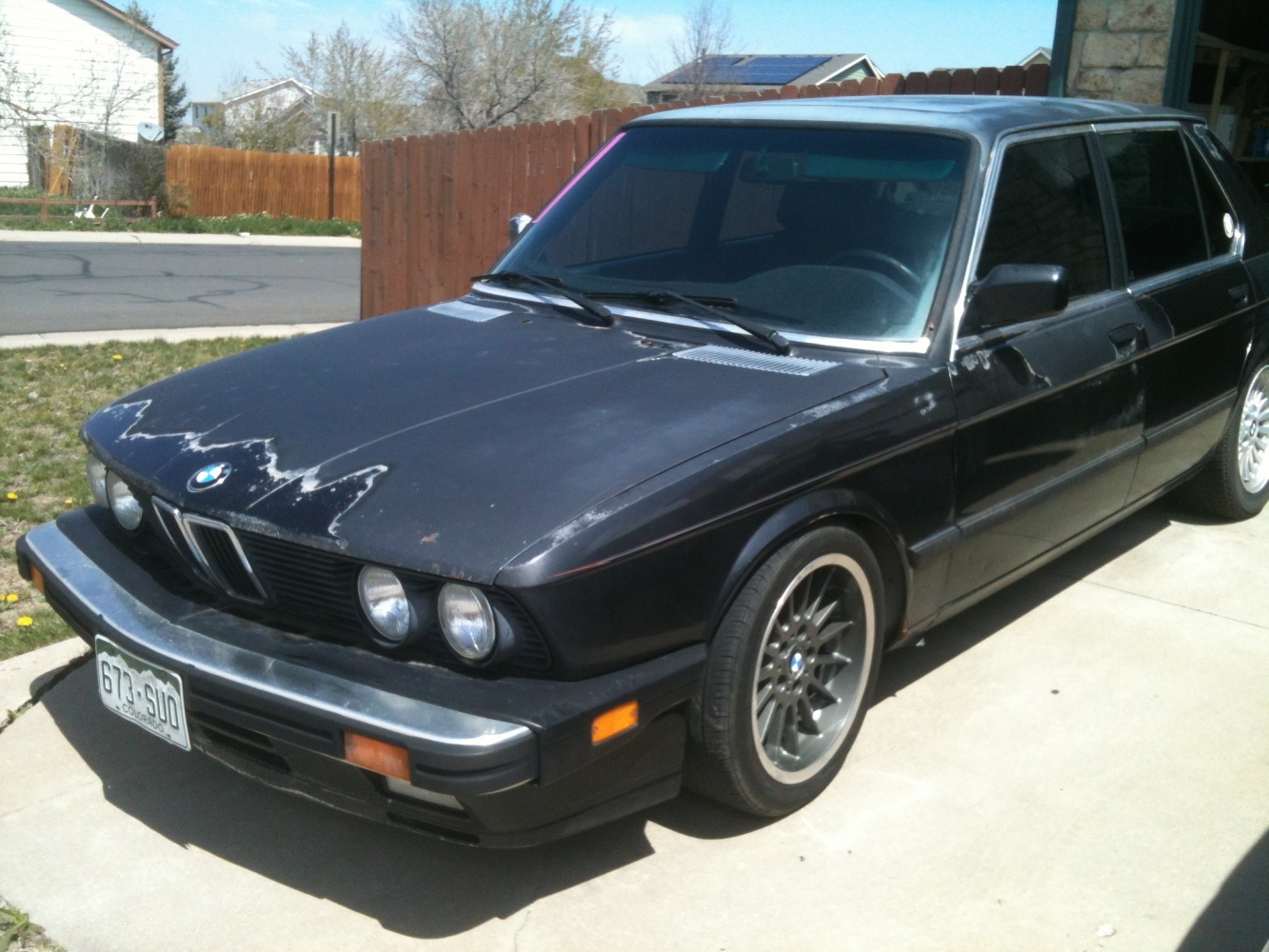
I have been working on reinstalling small misc items such as turn signal switch, steering wheel, seat belt receptacles, wiper stalk, headlight switch, and various sensors and engine parts that had been removed. The other issue was wires cut on 3 of the 4 doors

I have to get the C400 connector by the driver's speaker well and get them soldered together and hope the locks and windows work. I'm hoping I can get it all working.
Got the car running and driving and put some front seats in it and played with the alignment a little bit by visual inspection.
But onto some pictures of the new subject. The style 33 wheels on there were worn and didn't have centering rings. I'm not sure that I like them anyway, maybe I'll try them later.
Oh yeah, the pink tape was used to hold the door on when towing it. My wife likes it so it has remained for a little while.
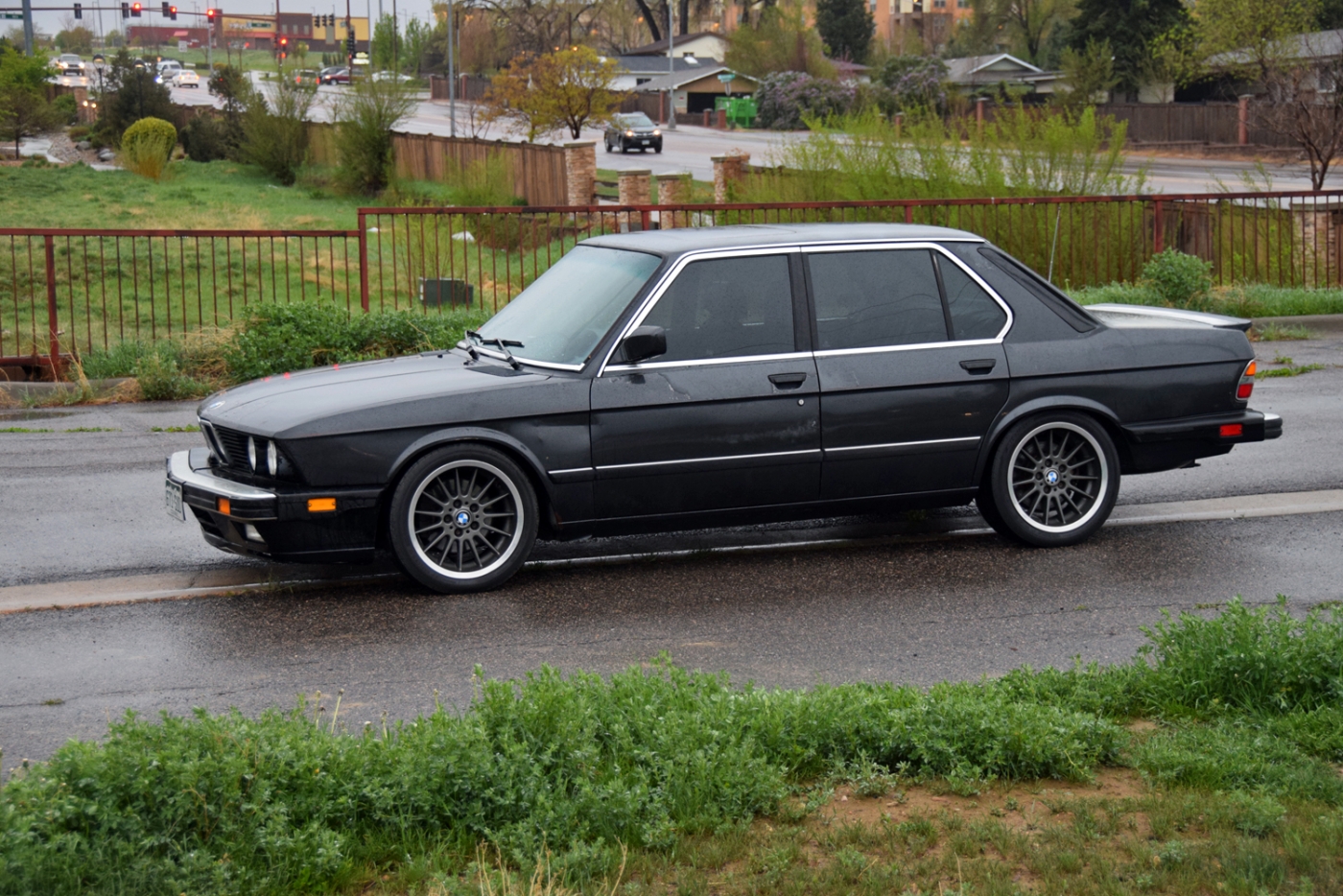
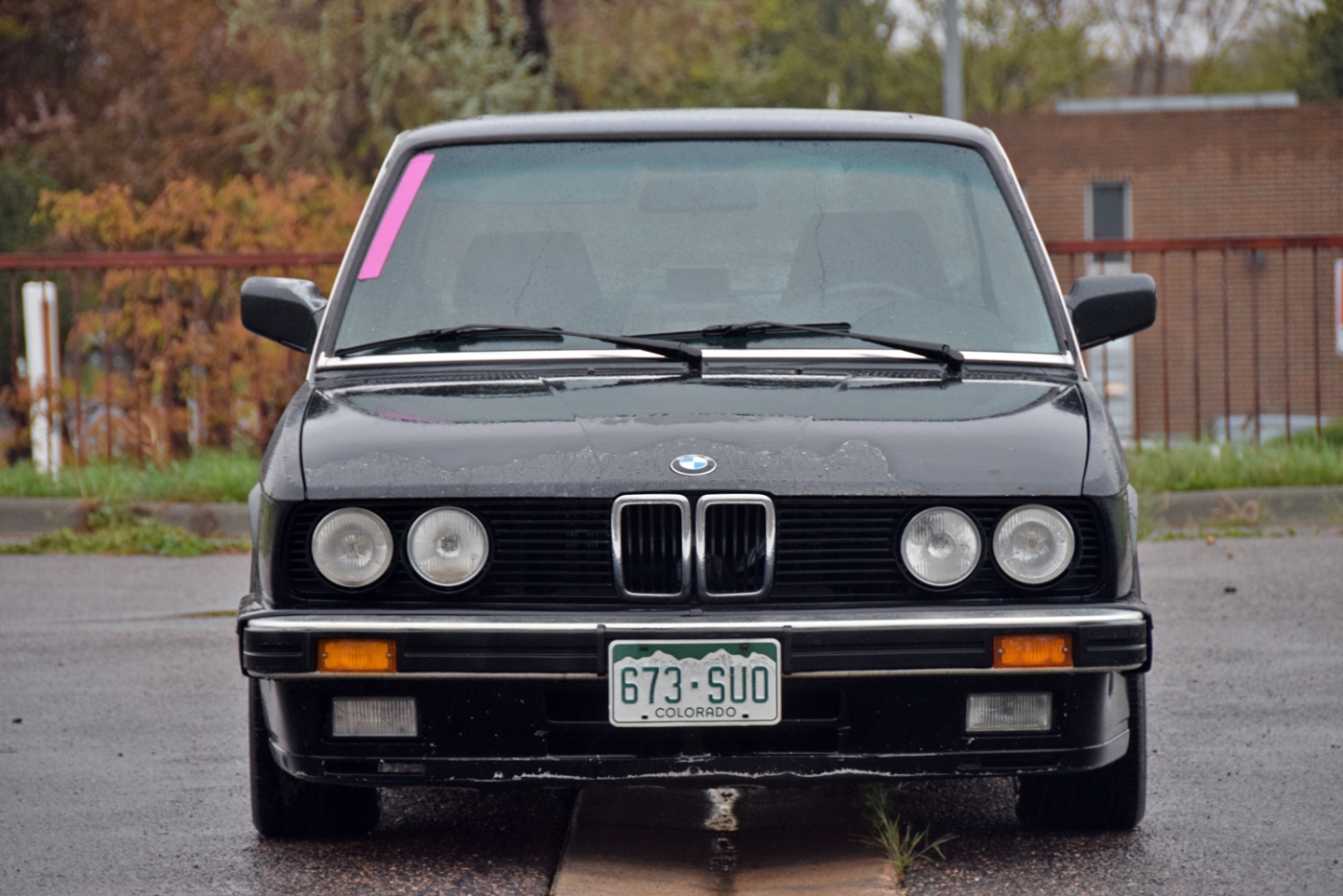
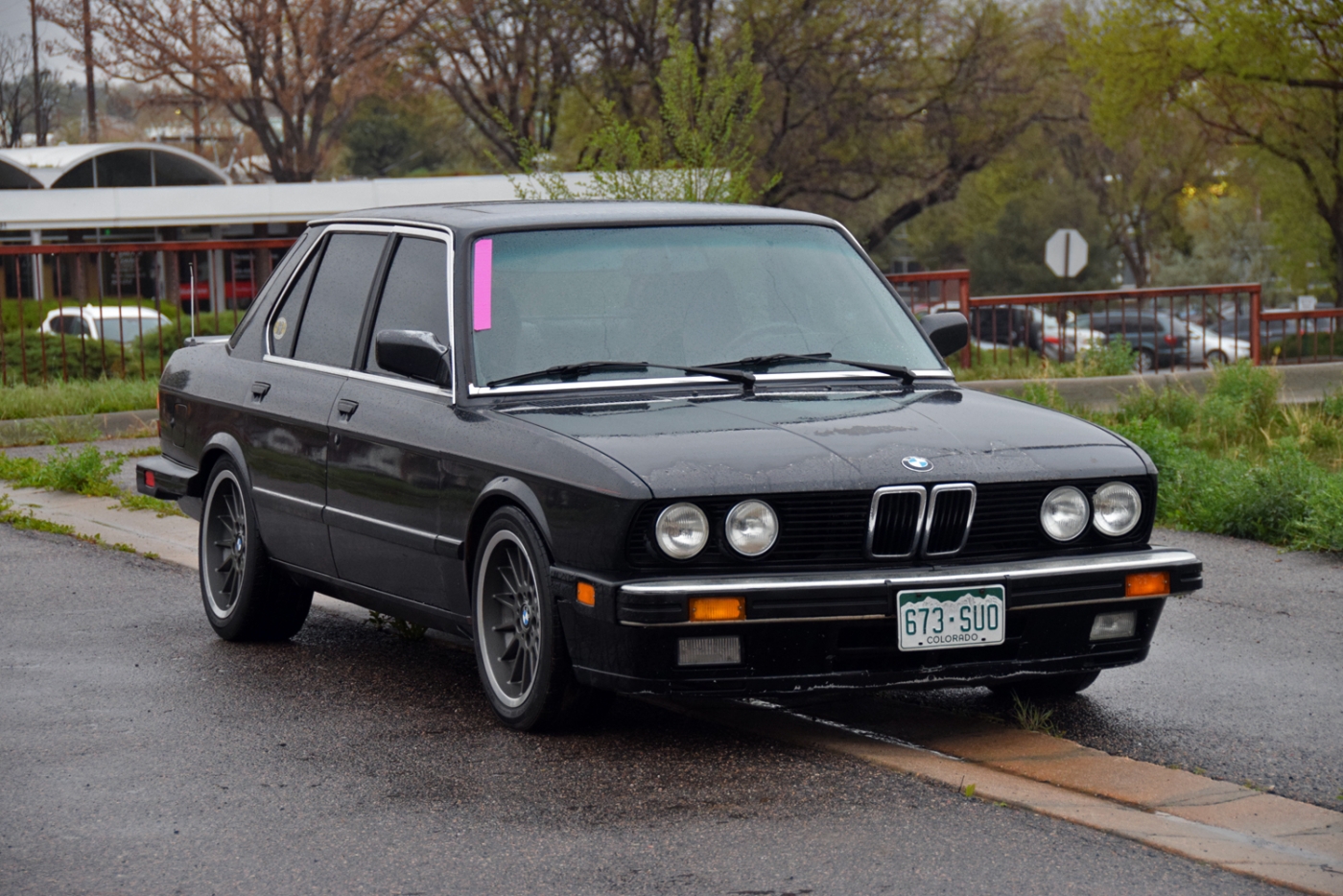
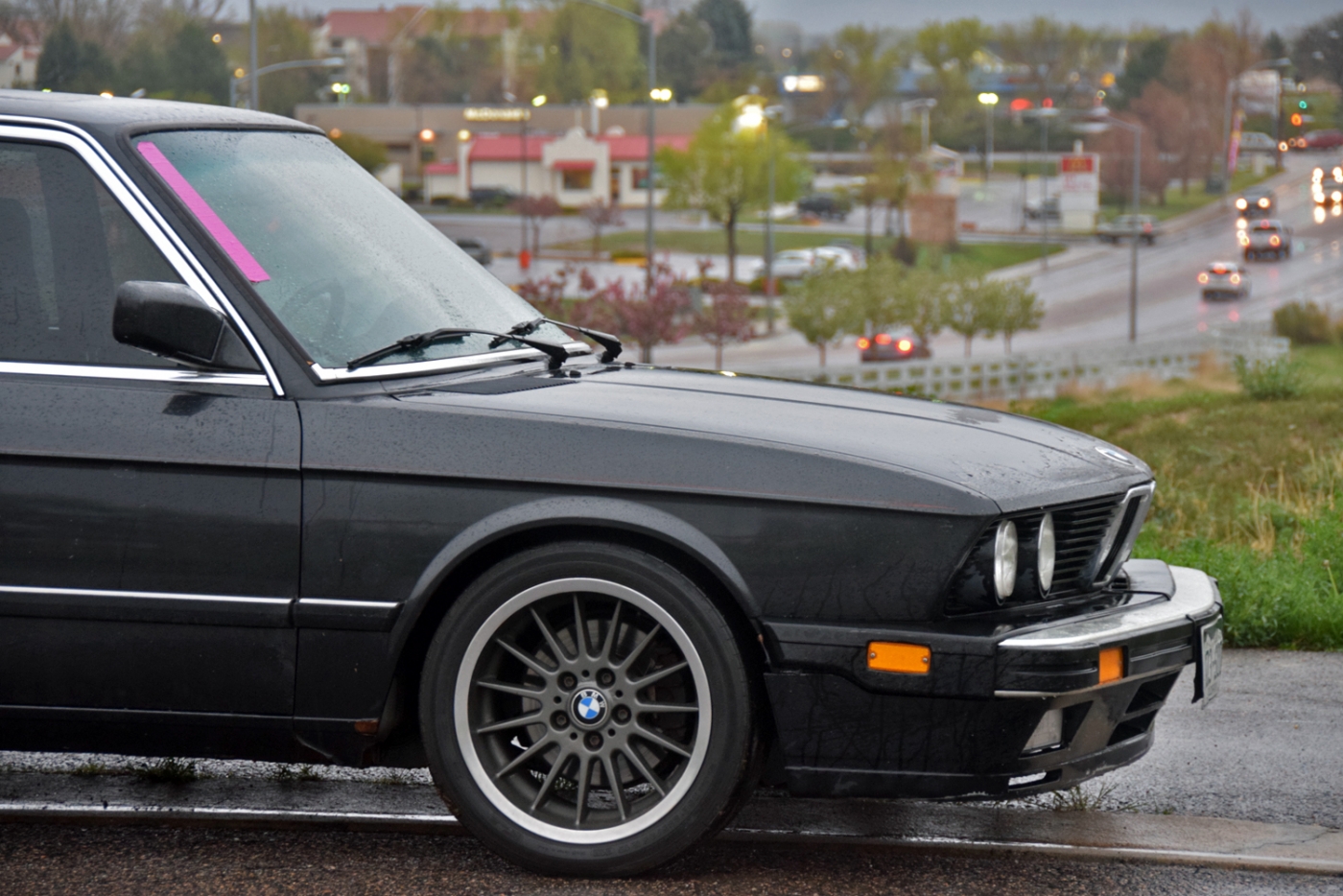
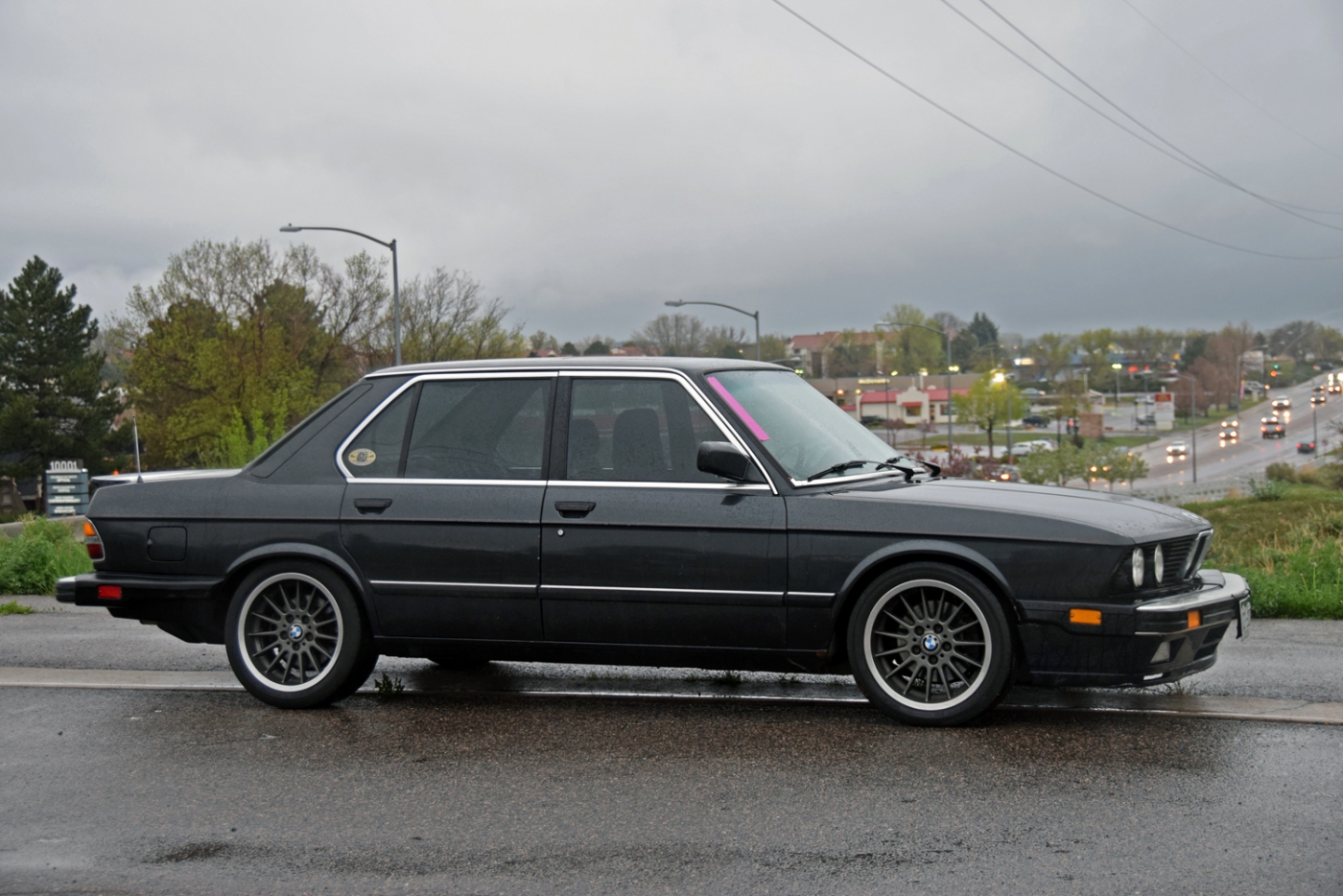
He's got a little name tag, so he's known as Burt now...
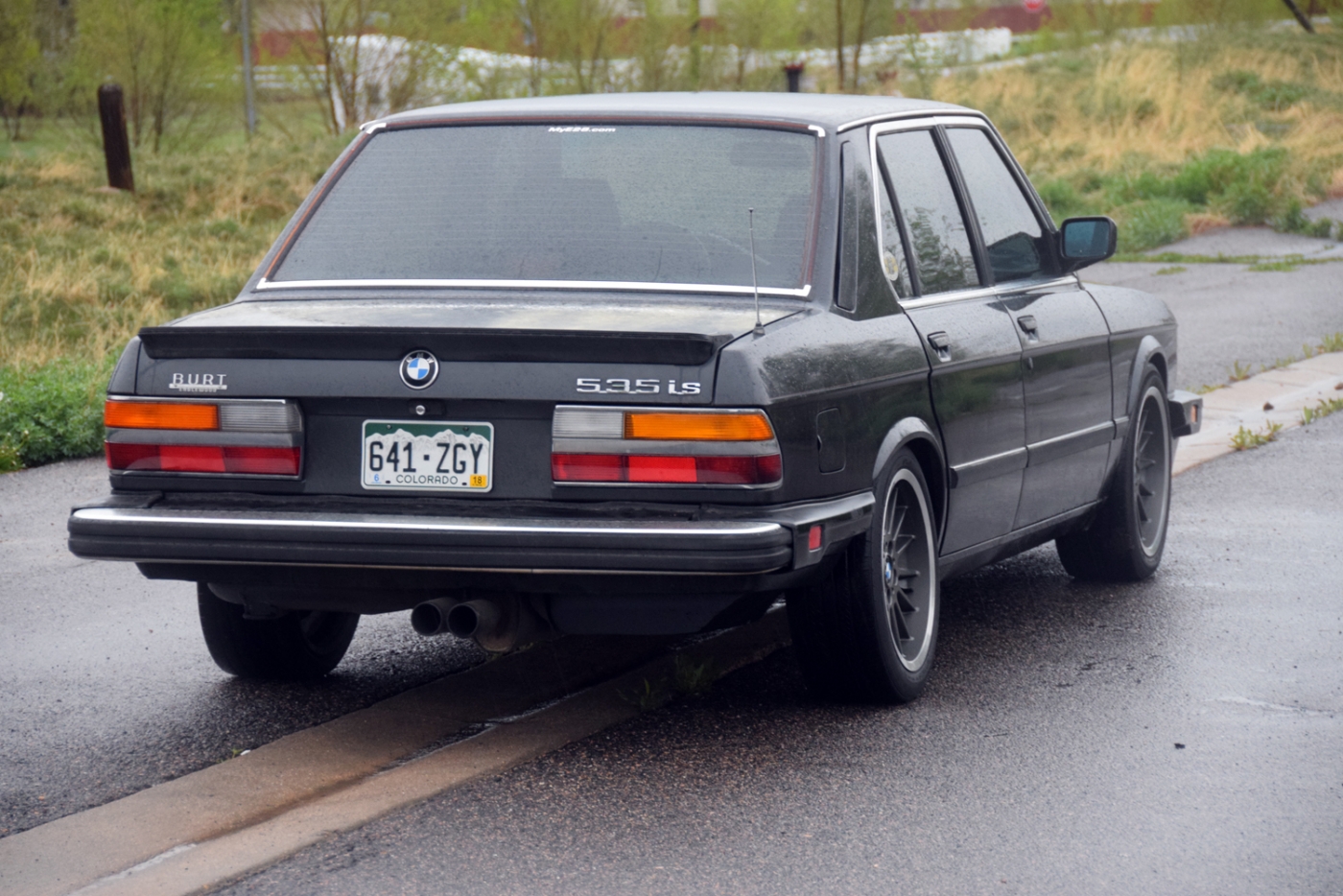
I spy a lot more negative rear camber than what I'm used to with a lowered e28.
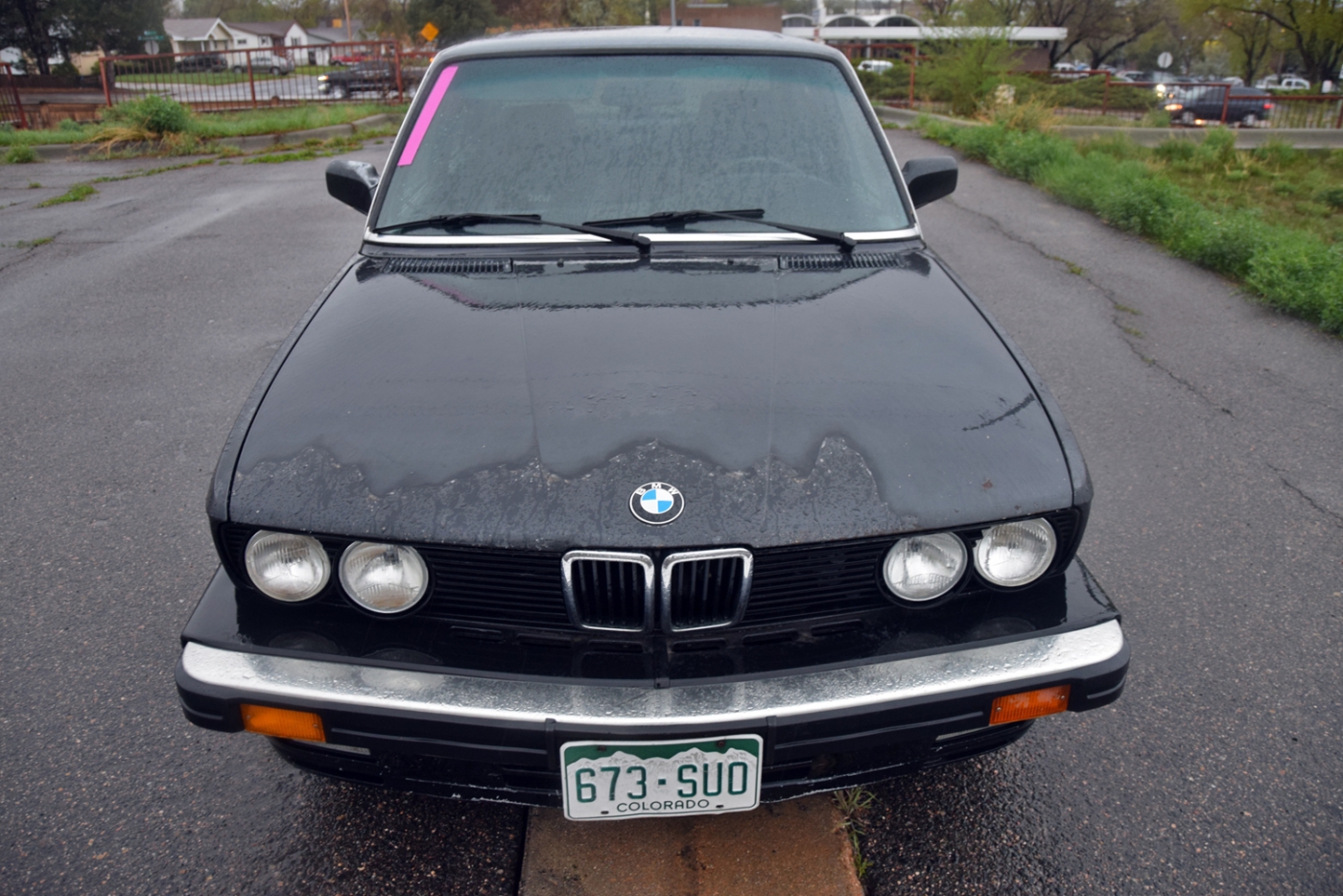
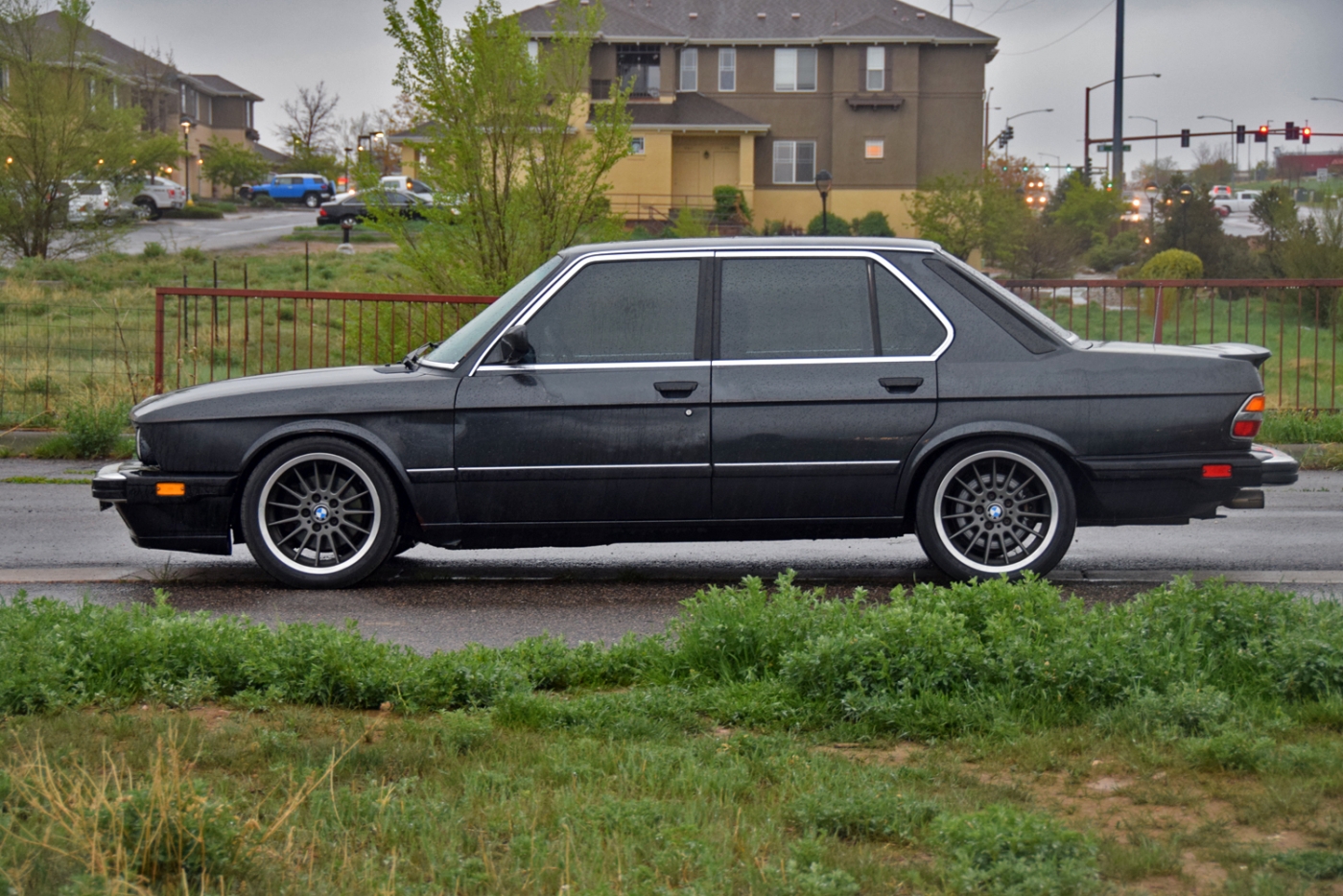
The plan is to swap the good parts from the 633 into the 535is and use it as my track car now. The small dents on the driver's side are the worst of it, but this car seems to follow the theme of the 633-- a little rough around the edges but overall a solid base.I prefer the mechanical over the visual and I can fix the paint in the future still also.
The logistics are difficult to arrange for two chassis and two engine pulls so I am trying to figure out when or how I could make that work, and then leave the NA engine out of a car (or maybe put it back int he 633 so it can move and drive??).
I decided to get a start on fitting my 16x8 ET11 BBS RS211's or
Rial mesh wheels and roll the fenders. I also figure I can fit BBS RK 17x8.5 et15 for light weight 17's if I want, or race slicks on naked m system wheels. The rears didn't fit on my 535i but did on my M5, so I decided to roll the fenders. Using a friends tool and advice, I worked on it last night.
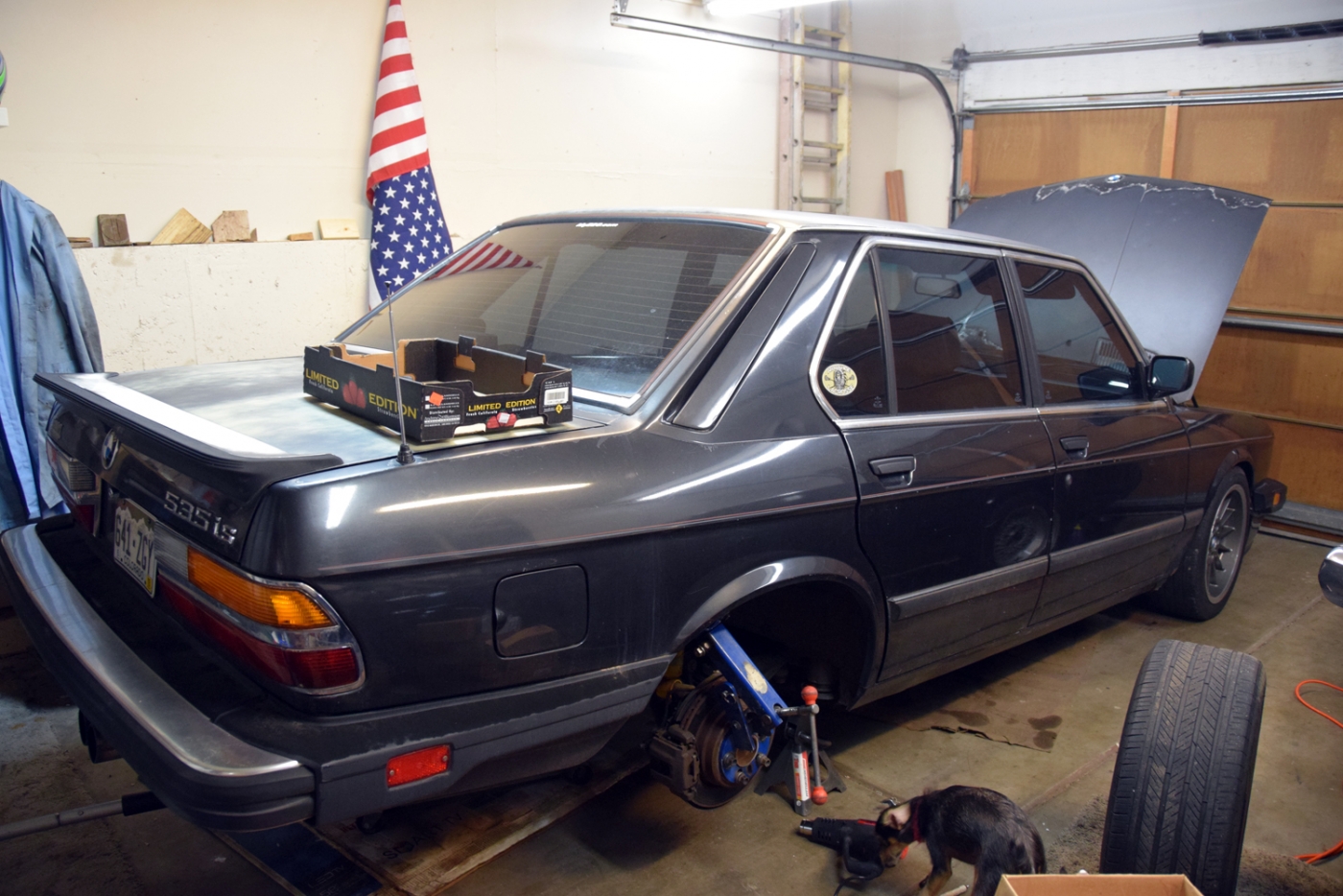
I used a heat gun to try to keep the paint pliable and heat the metal to ~130F then the Eastwood rolling tool with just a slight angle and slight pressure. The key was to be patient and work in small increments(and it really worked my arms as the rear diff locked up really well with the other side).
Here's where we started and based on experience with other wheels that fit, I needed about 9-10mm clearance to avoid rubbing when loaded. Mainly in hard cornering, we don't want a sharp edge to slice the edge of the tire. The E24 has a lot more clearance here than E28.
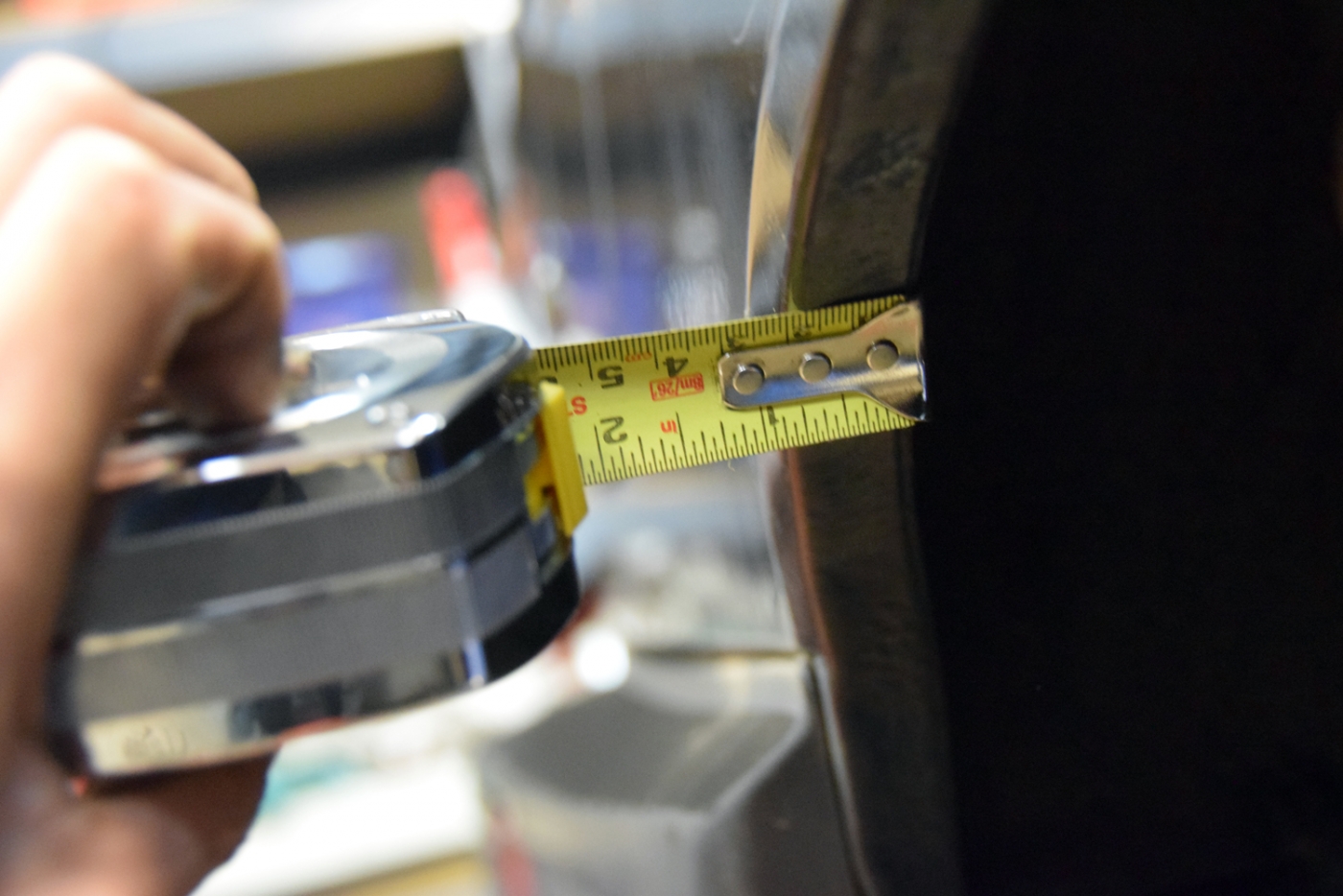
Rear clearance (with RS211) at normal ride height after settling:
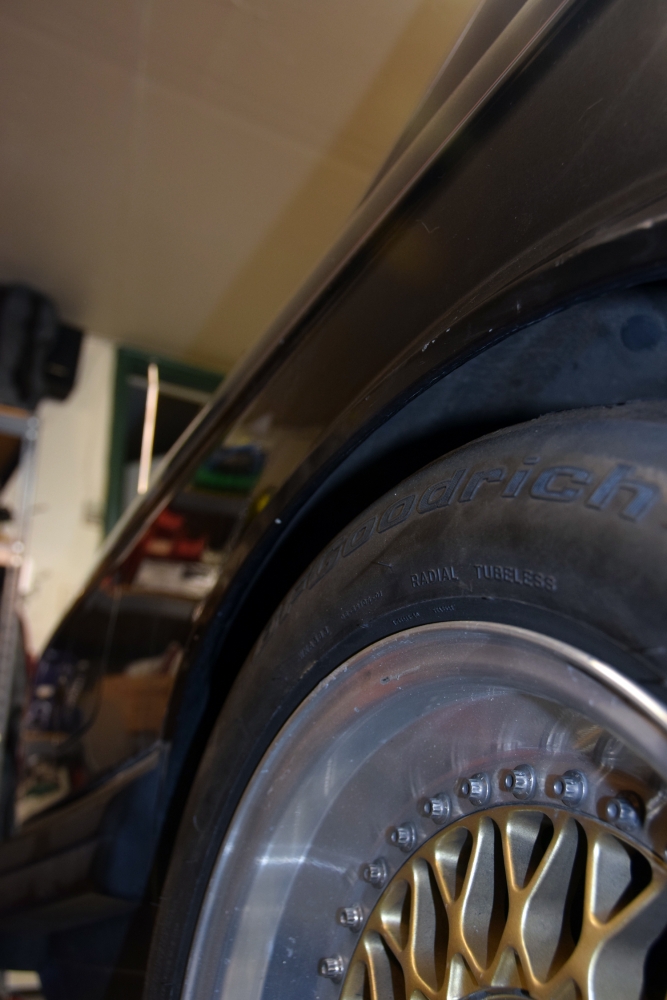
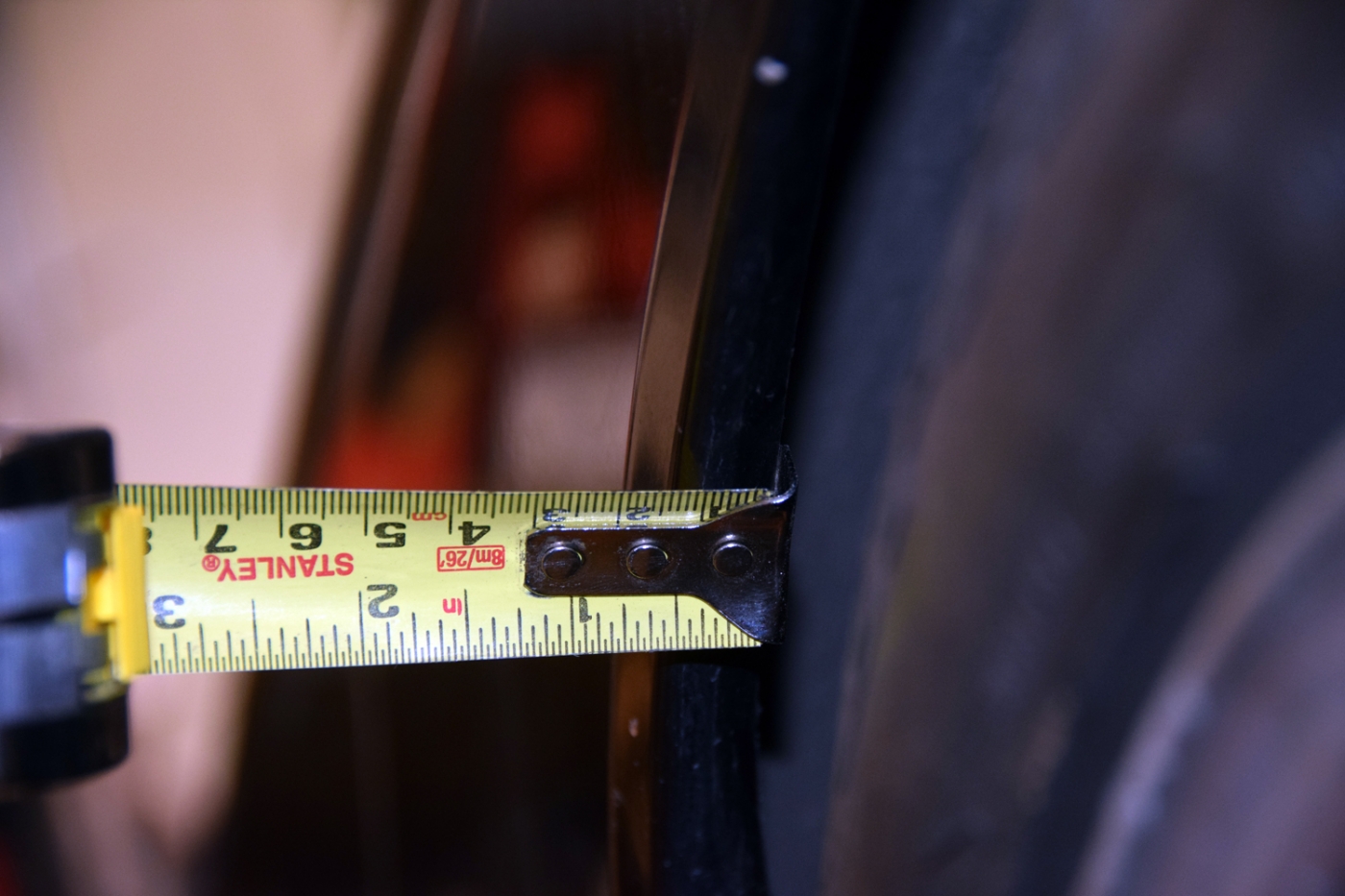
It looks like I gained about 6-7mm, but the fender lip is also up and out the way so I think it will give me the clearance I need in hard corners. The photos above you can see there is more than 1/2" of room from the fender to the tire.
So overall it will be a big project the put the turbo engine and other parts in this car, but I think it is the next step for this project. I thought about other E24's for a replacement but there haven't been many rust free ones around. I looked at two and it just seemed like a lot of work with rust or just the other work required to get a bare chassis to where I would want it. Plus this car is part way to my goal of a track car with welded in sway bar mounts, rear camber adjustment, a lighter/better balanced weight distribution, and satisfies in the looks department with the color and sports spoiler package.
